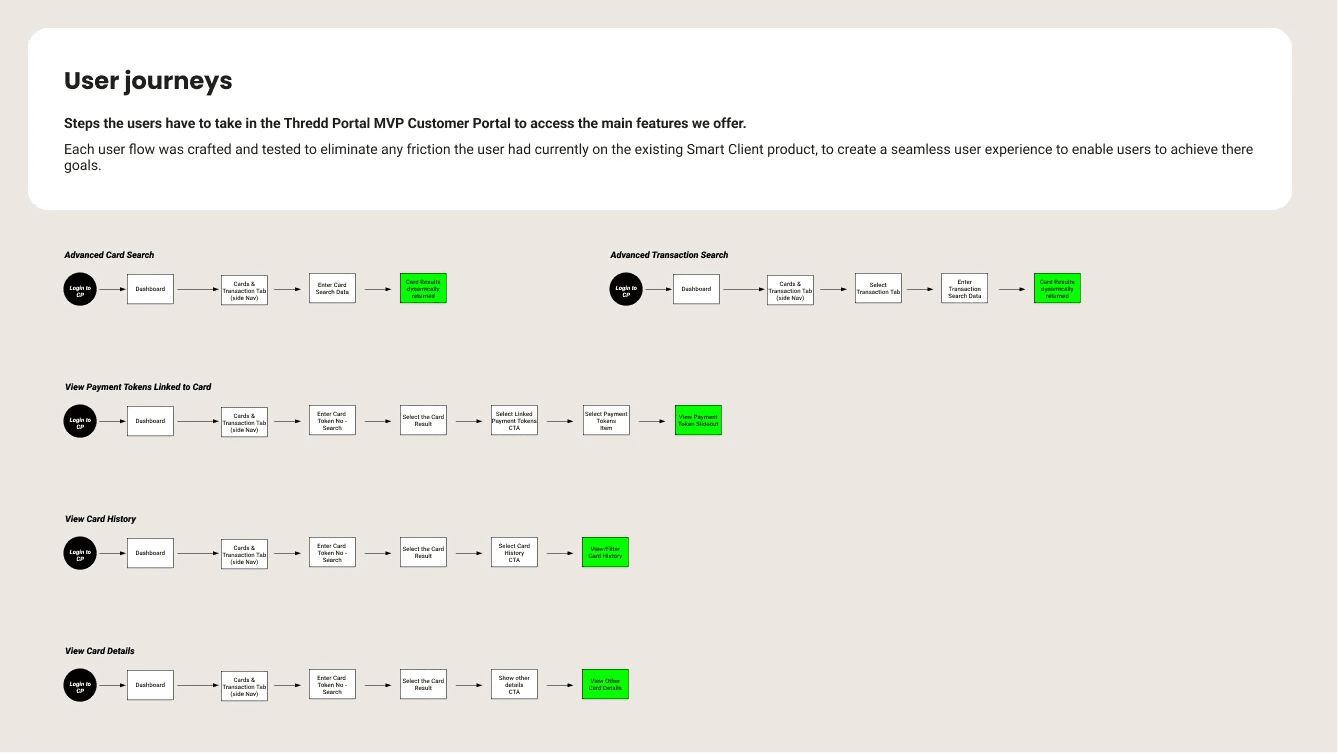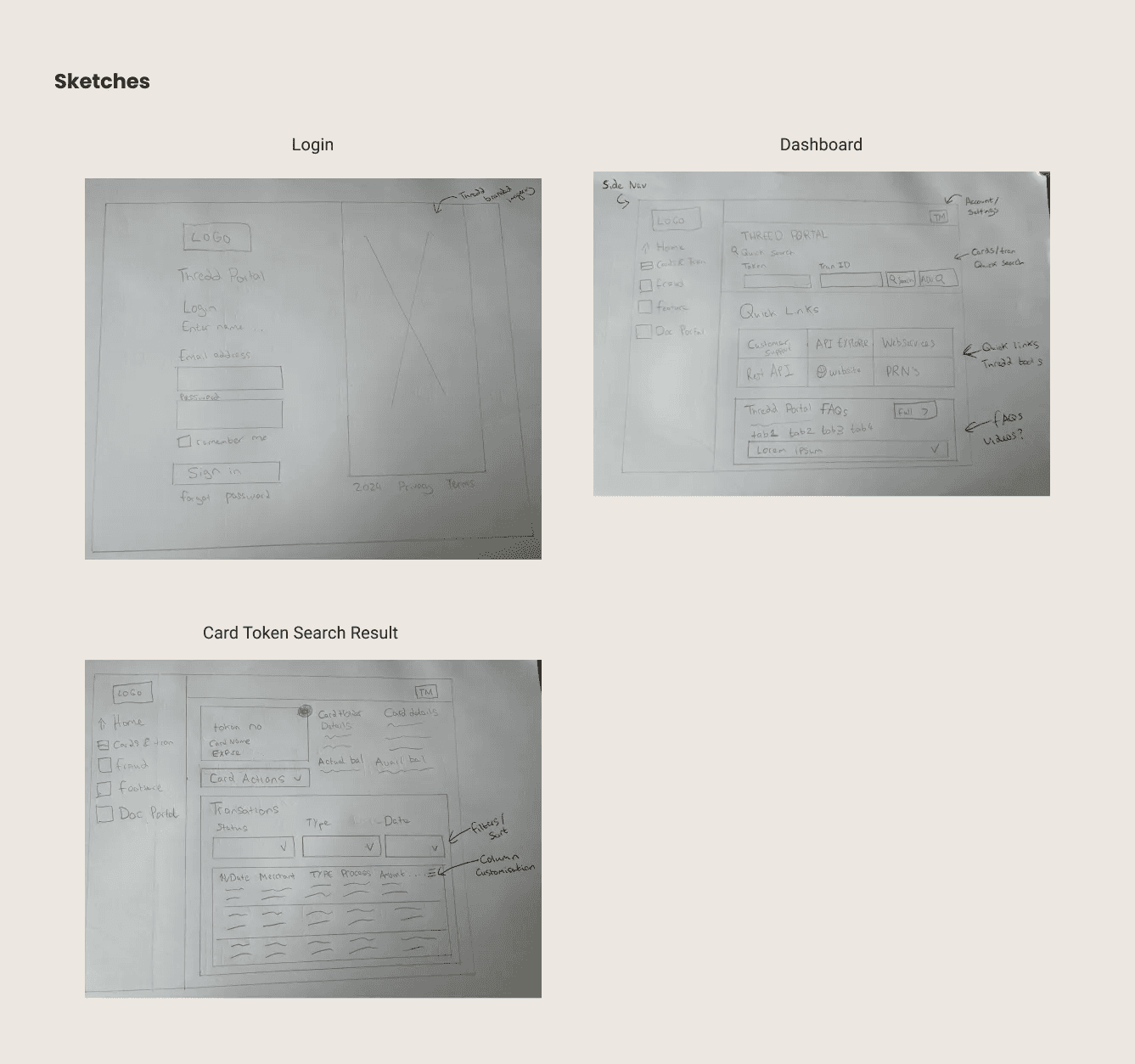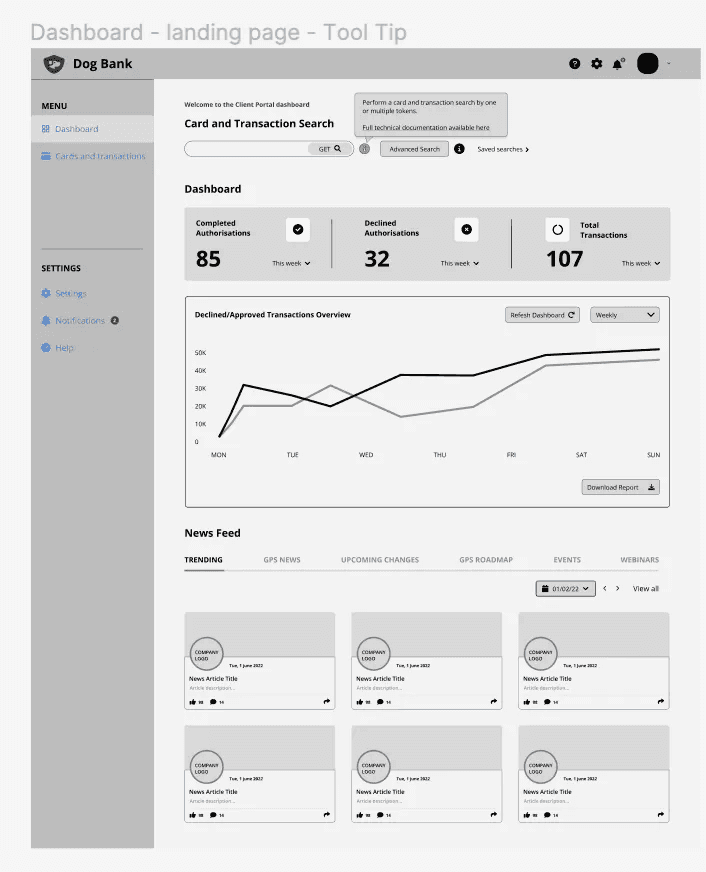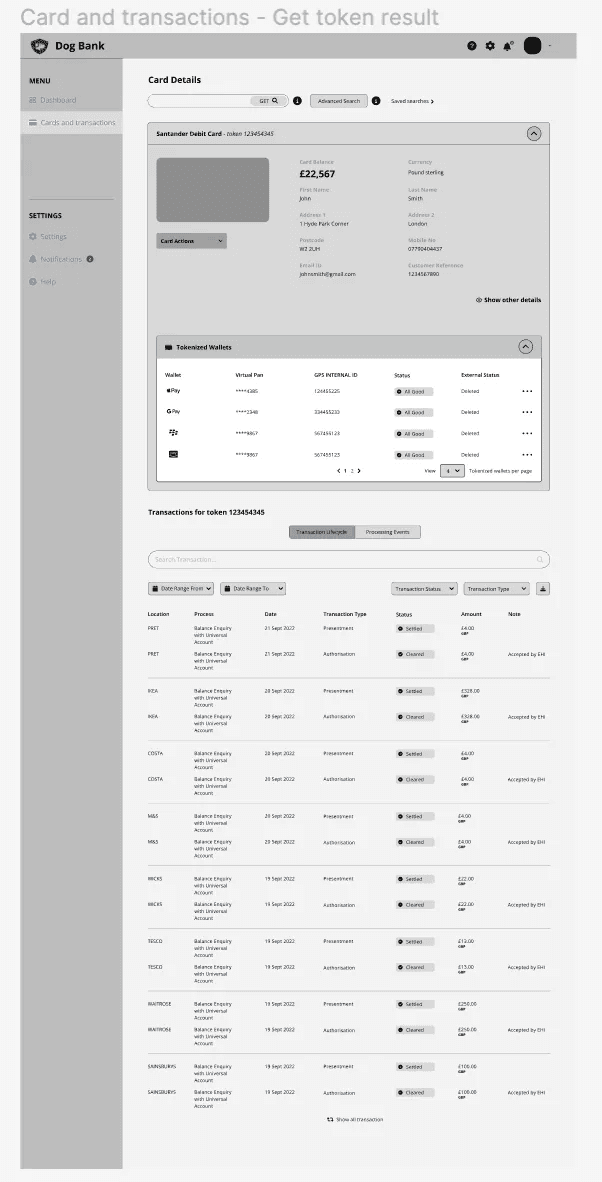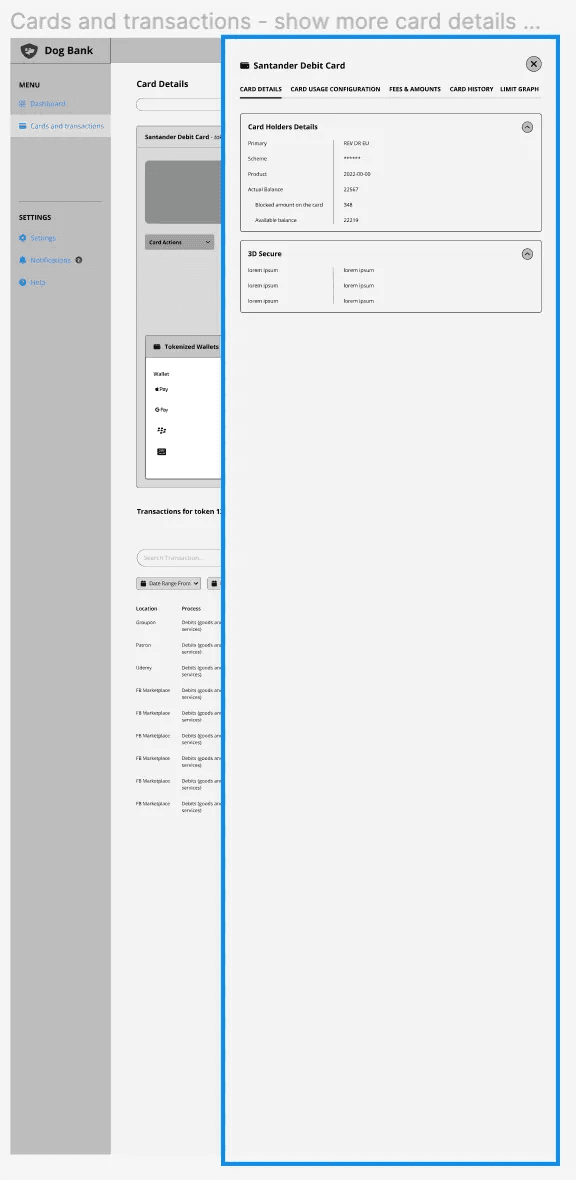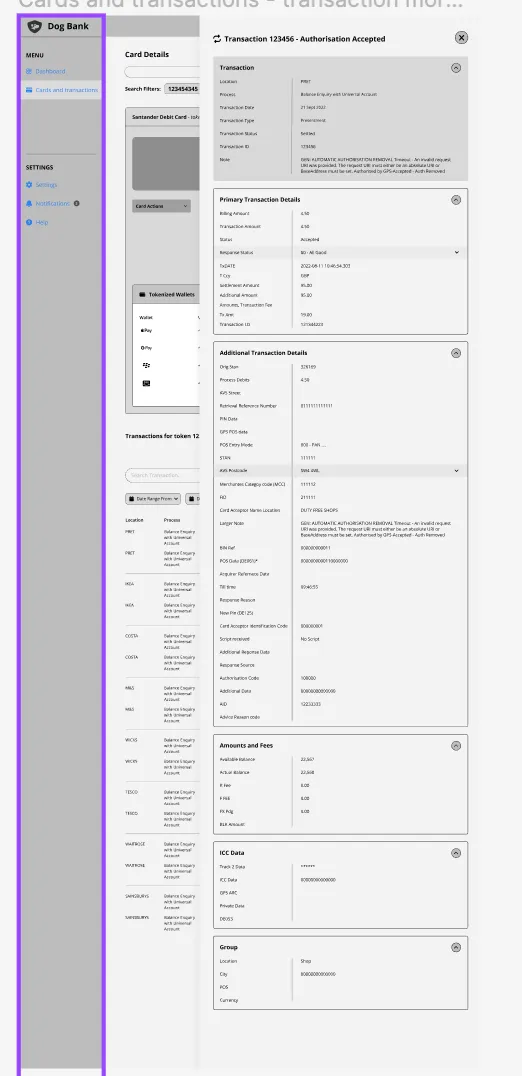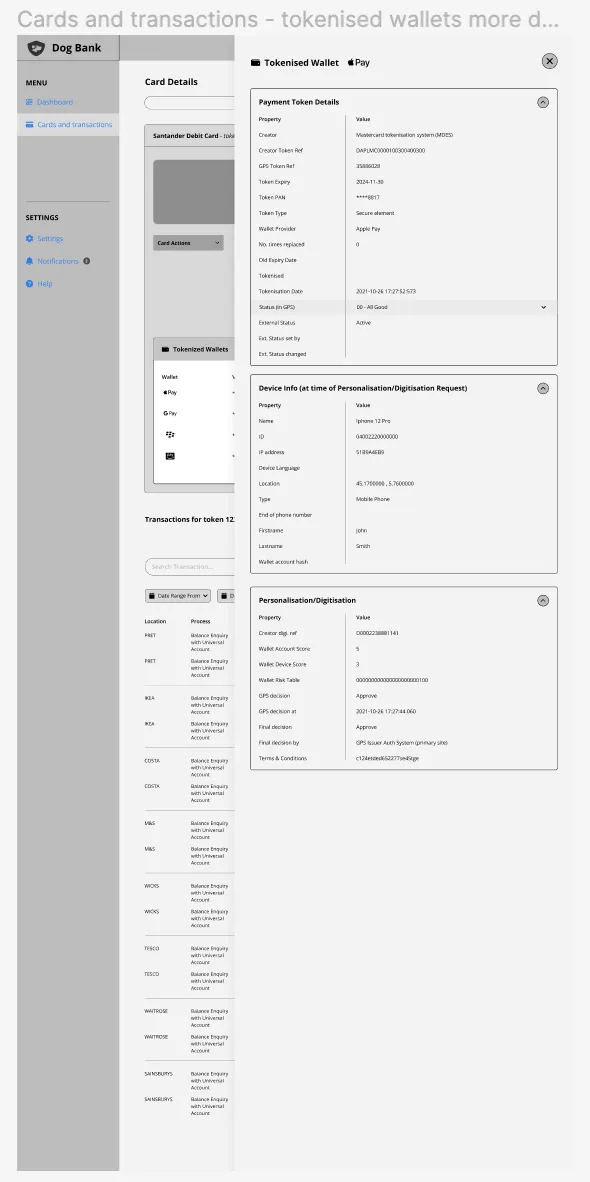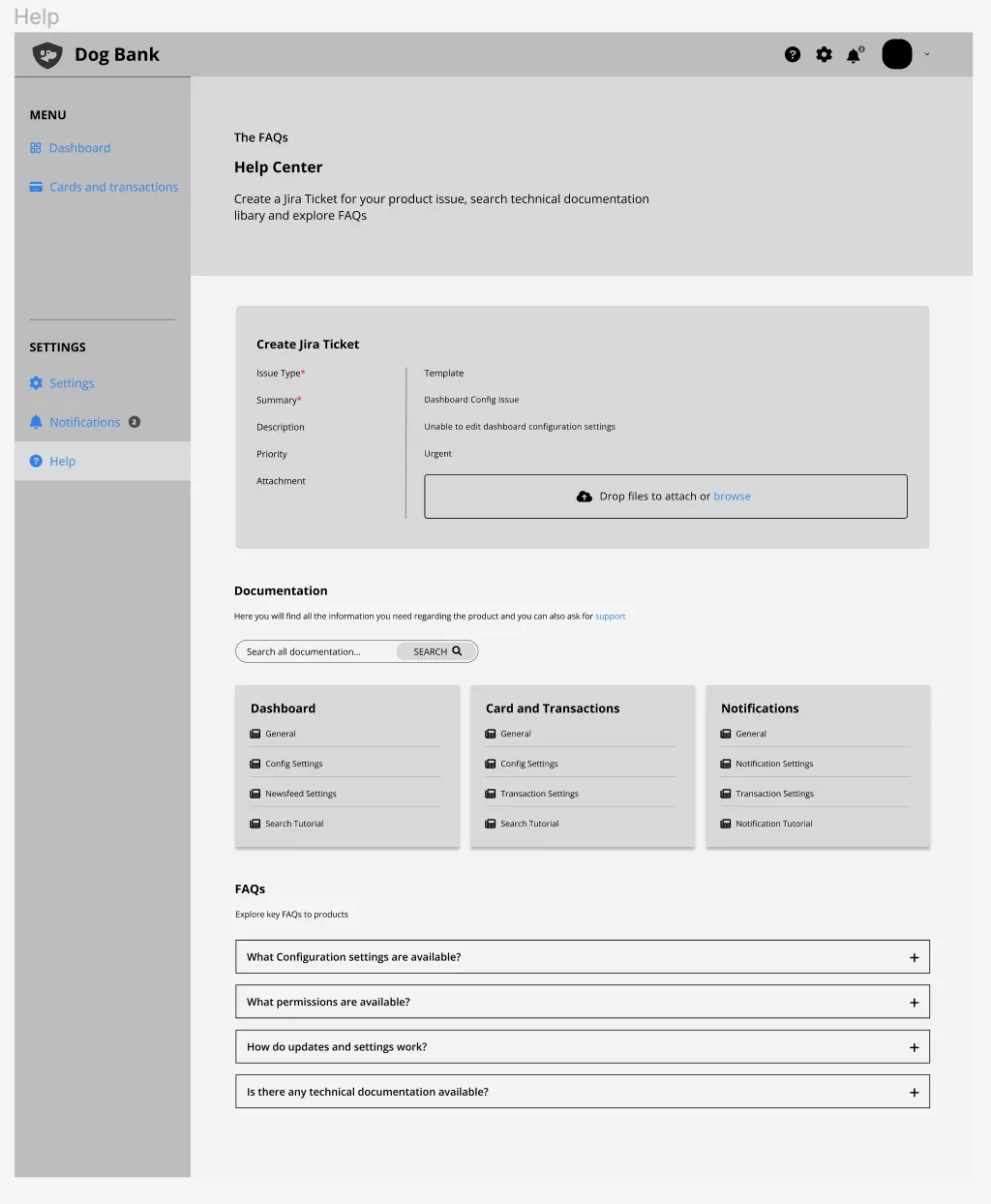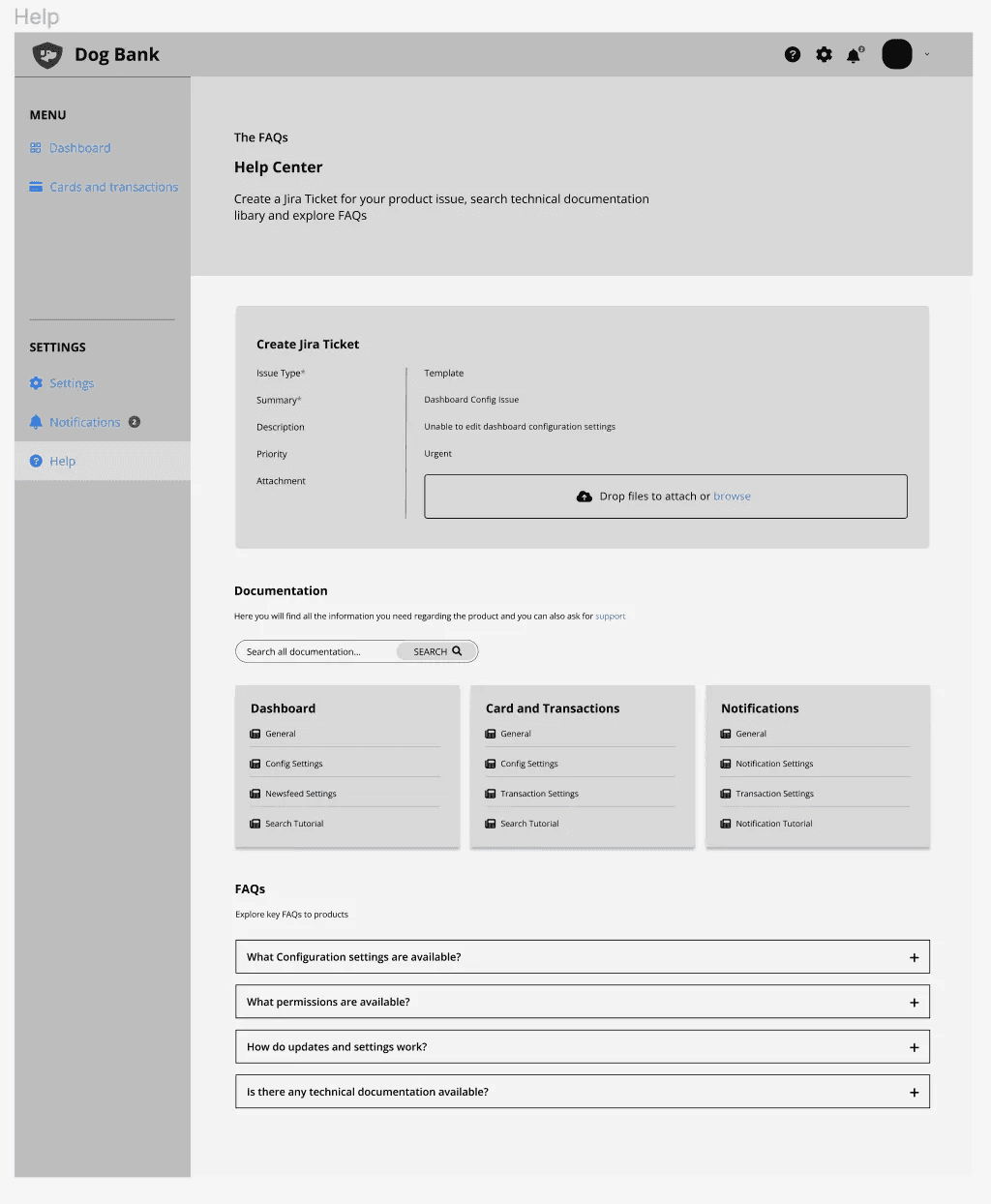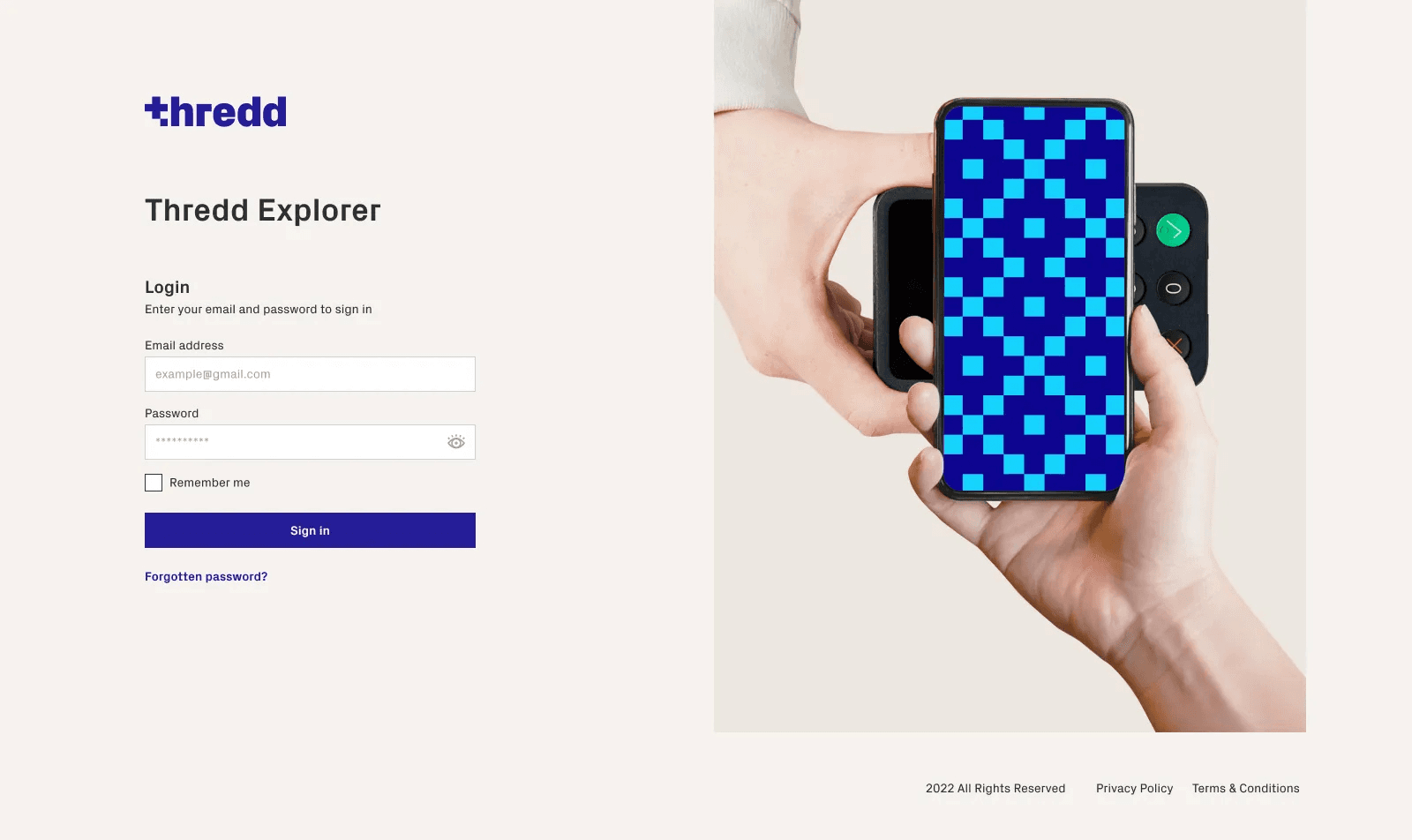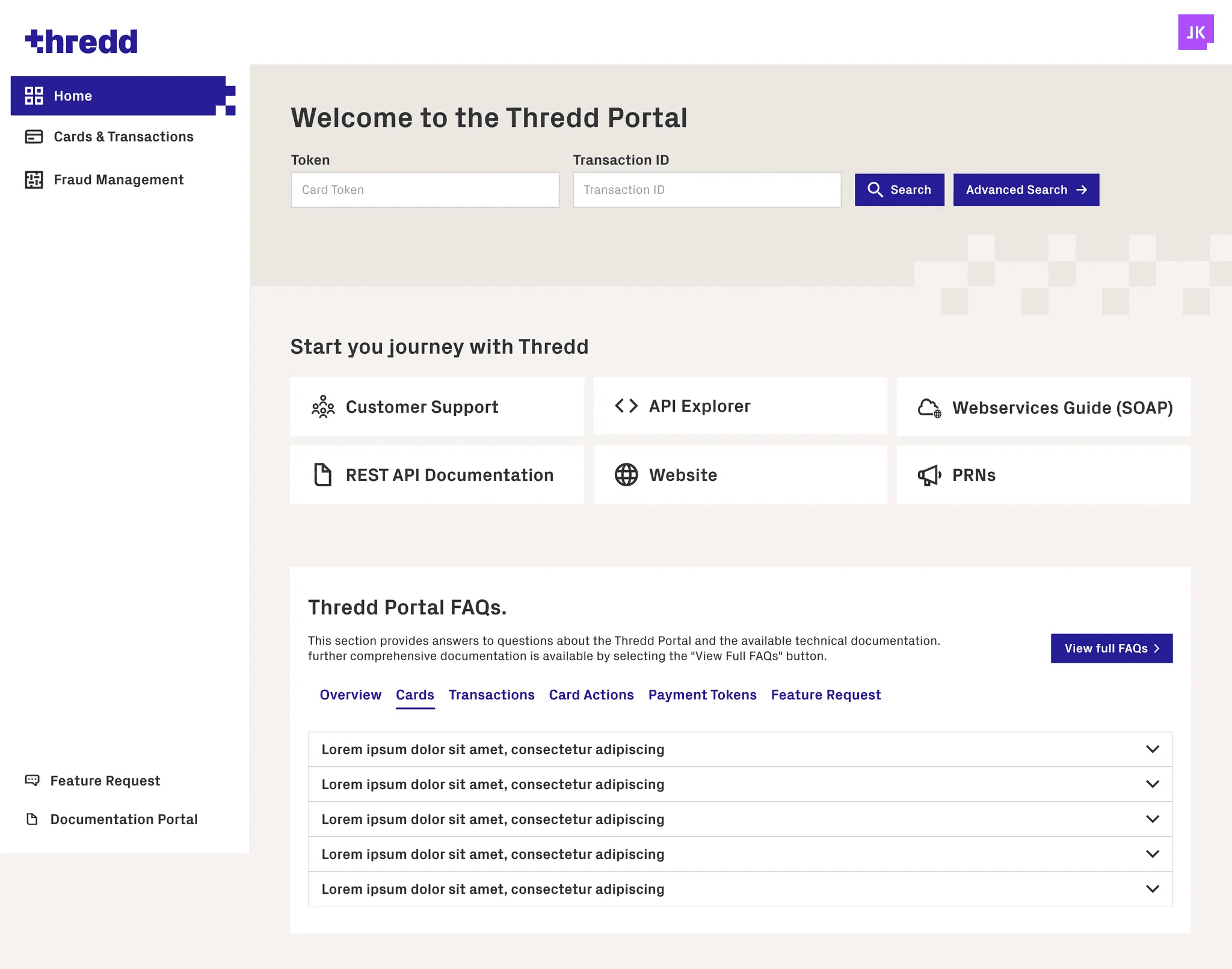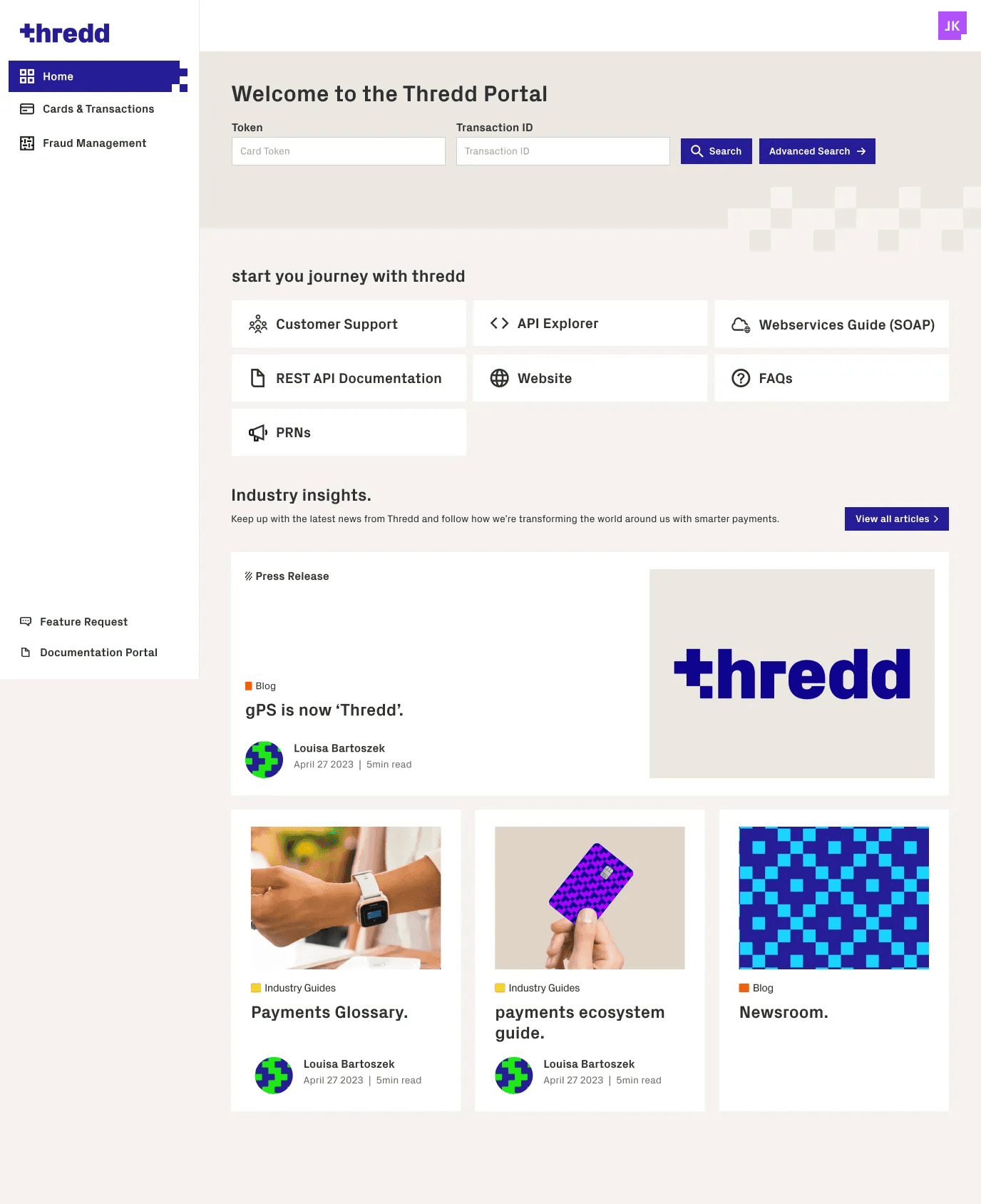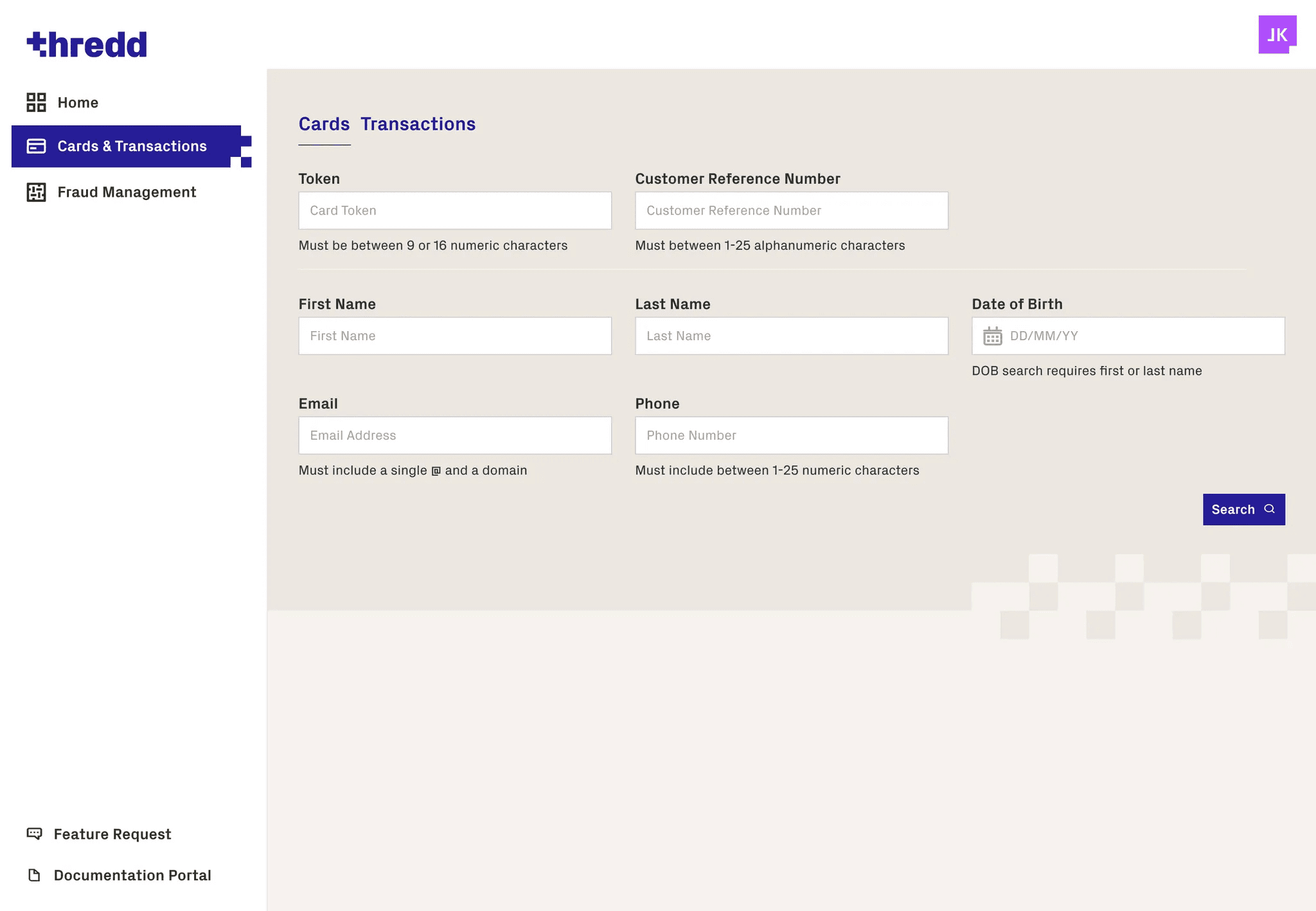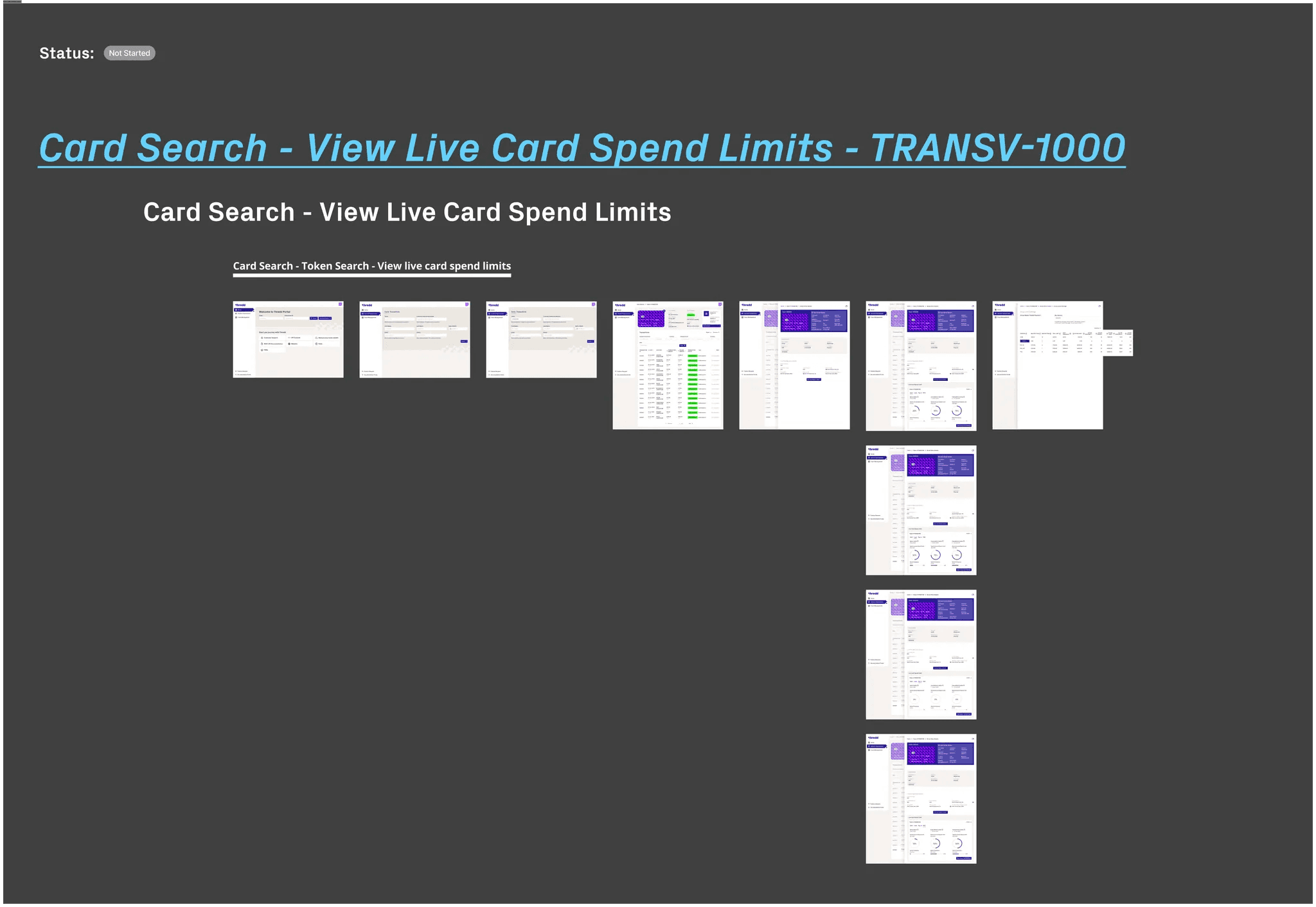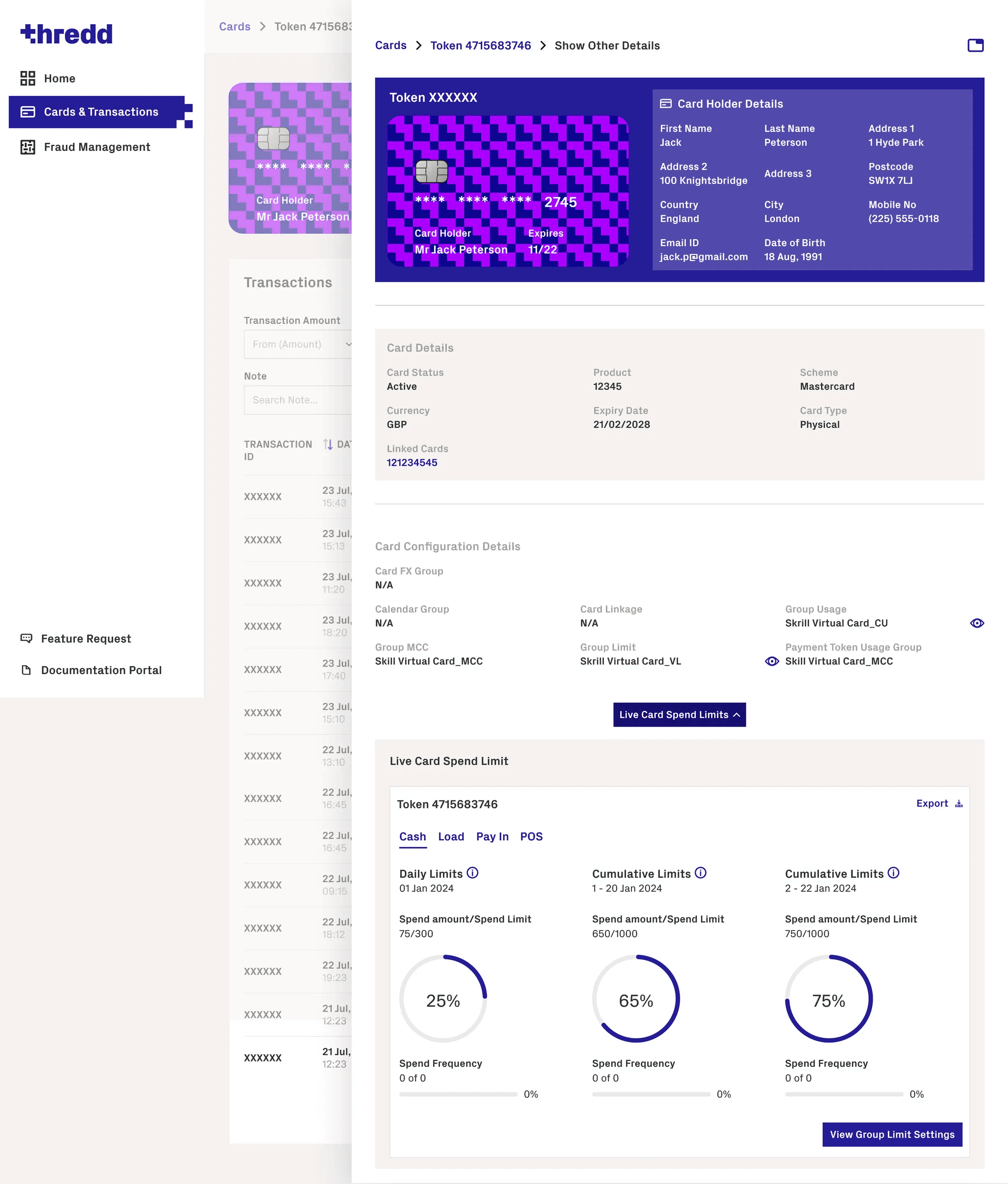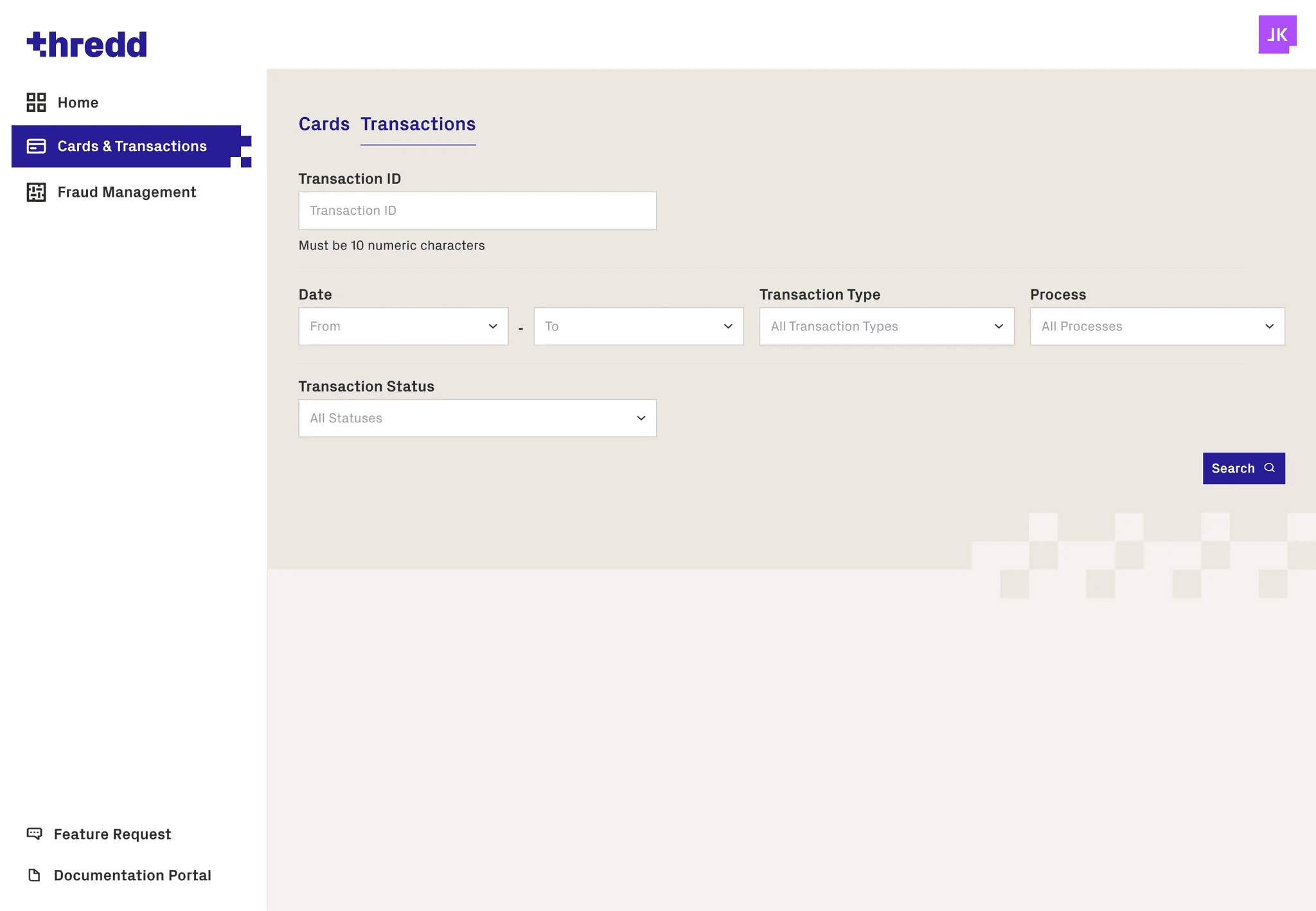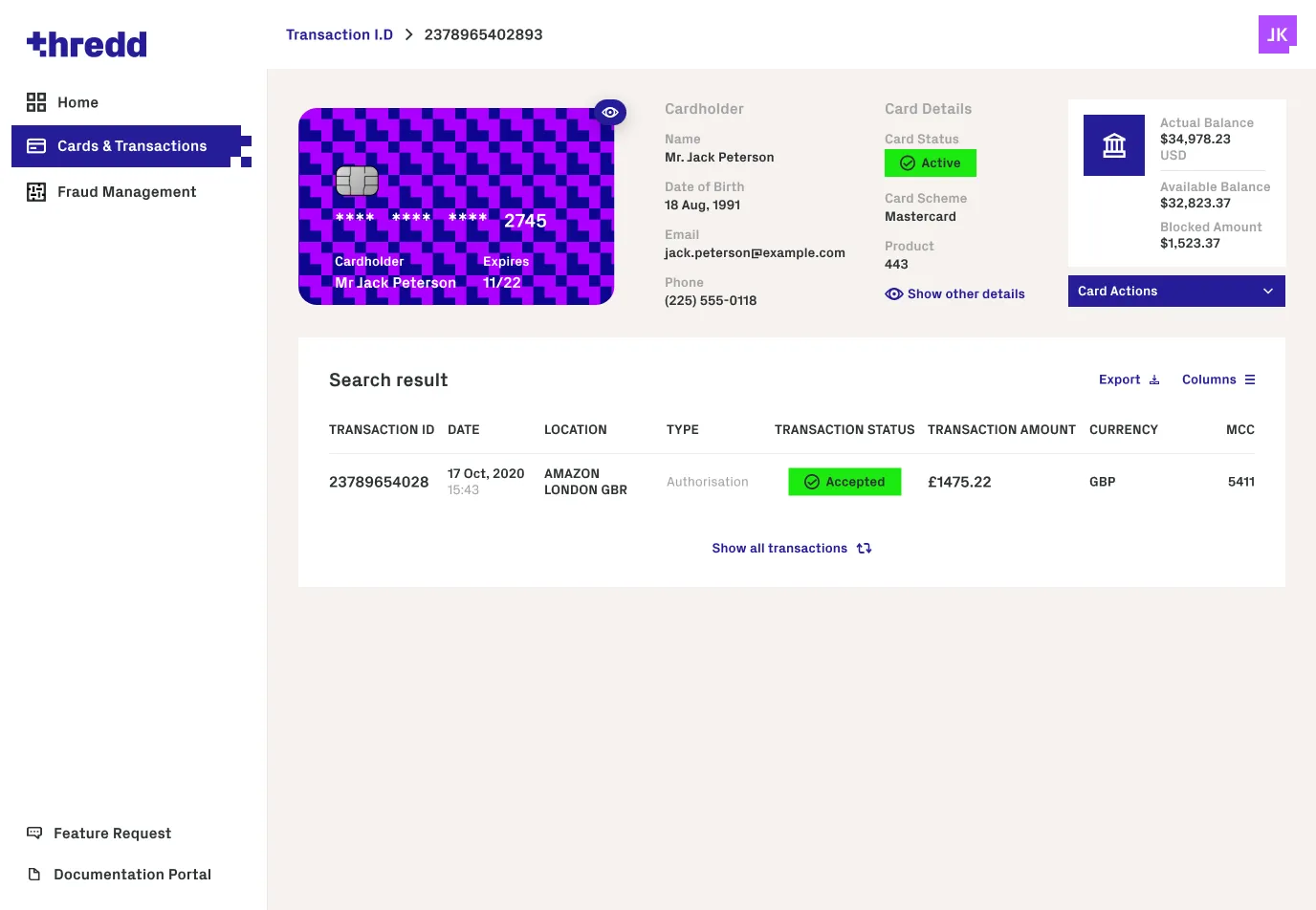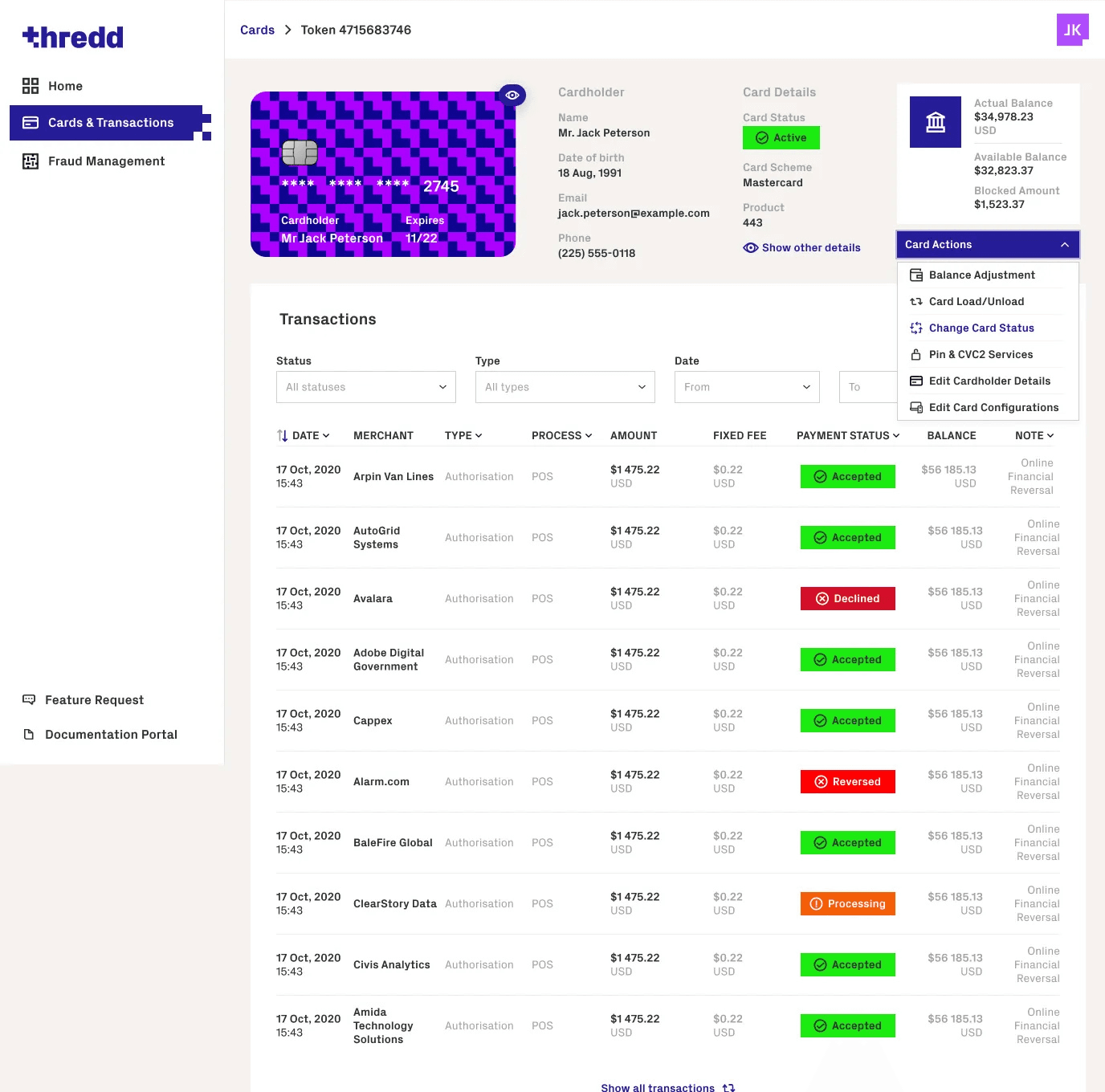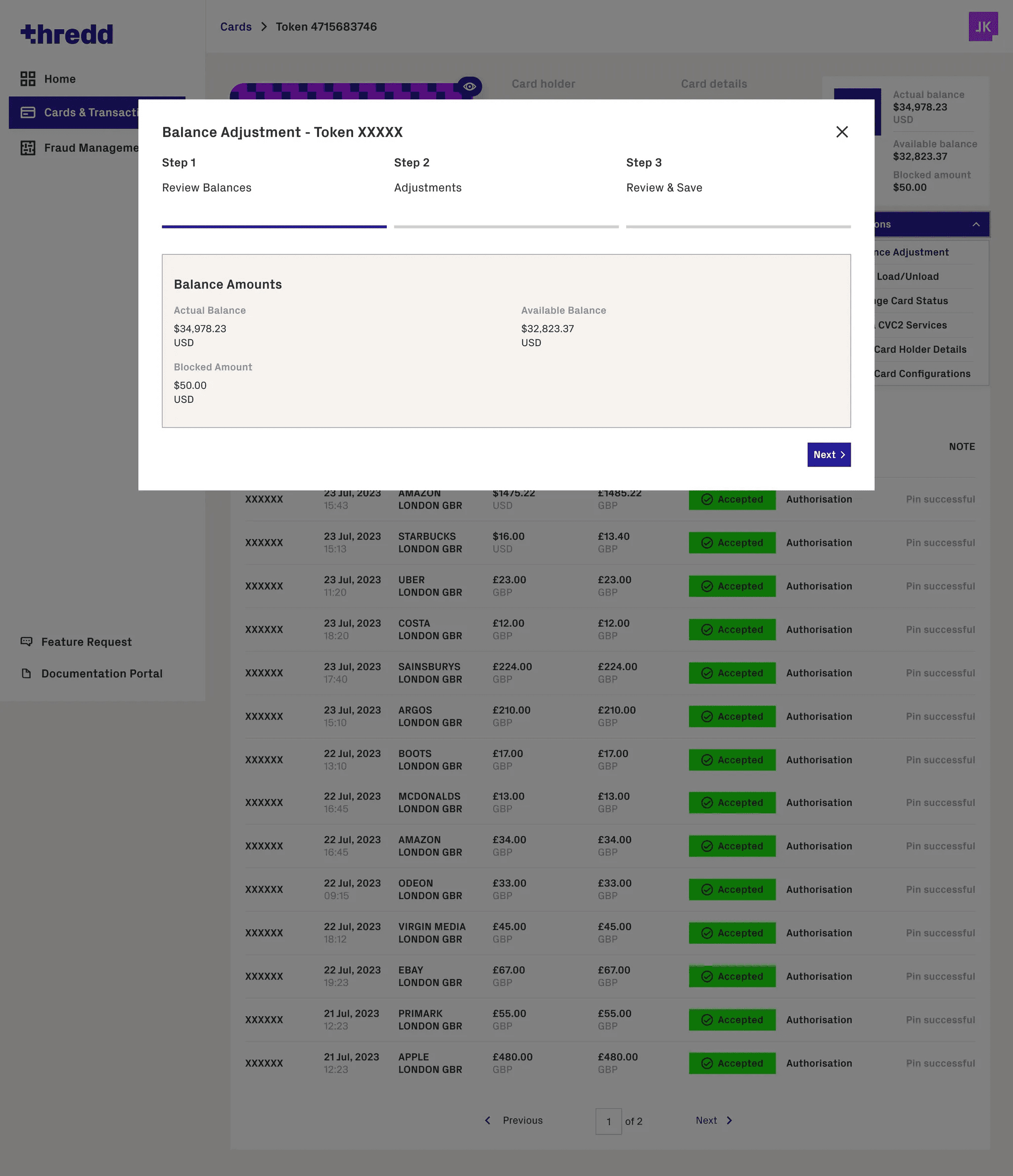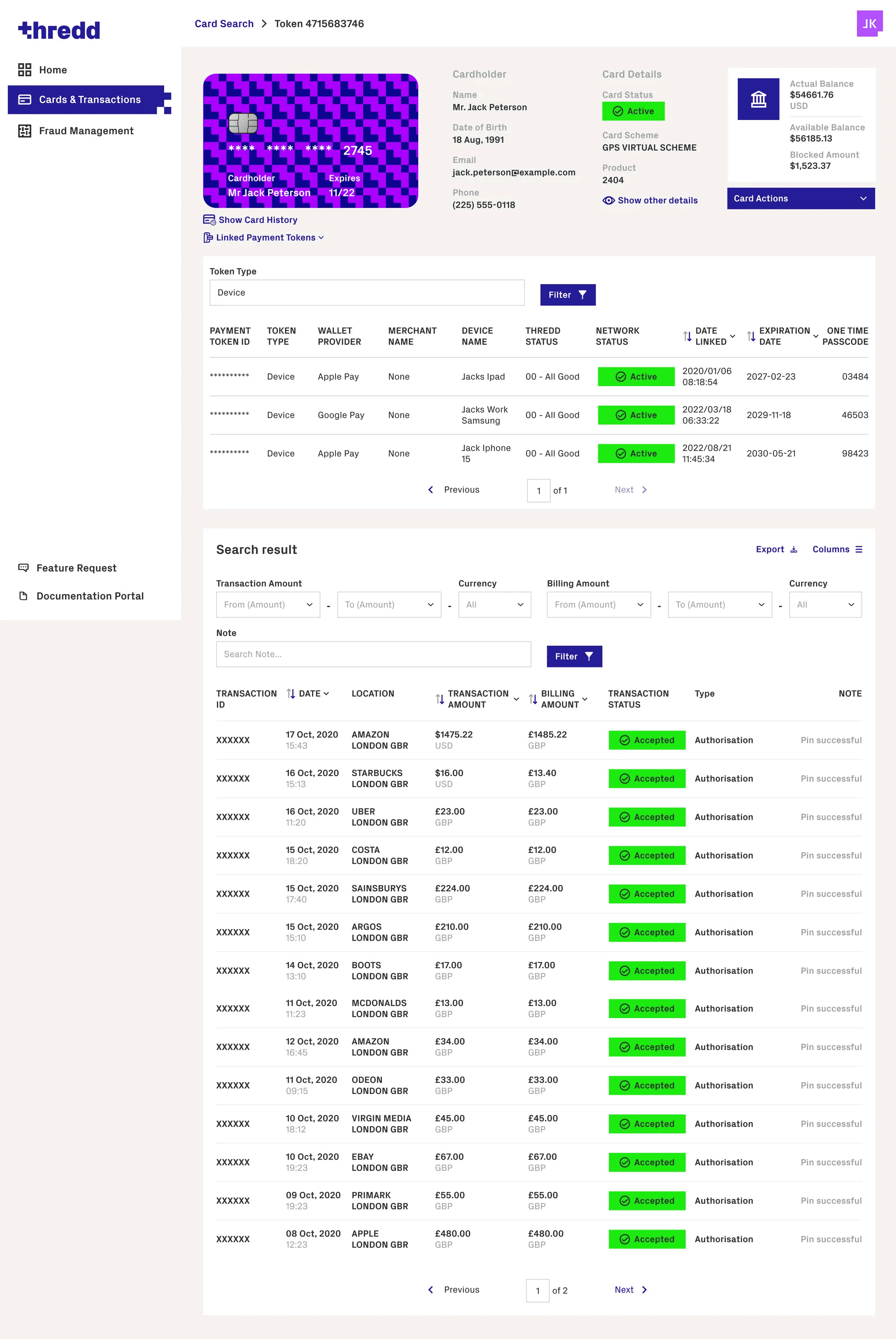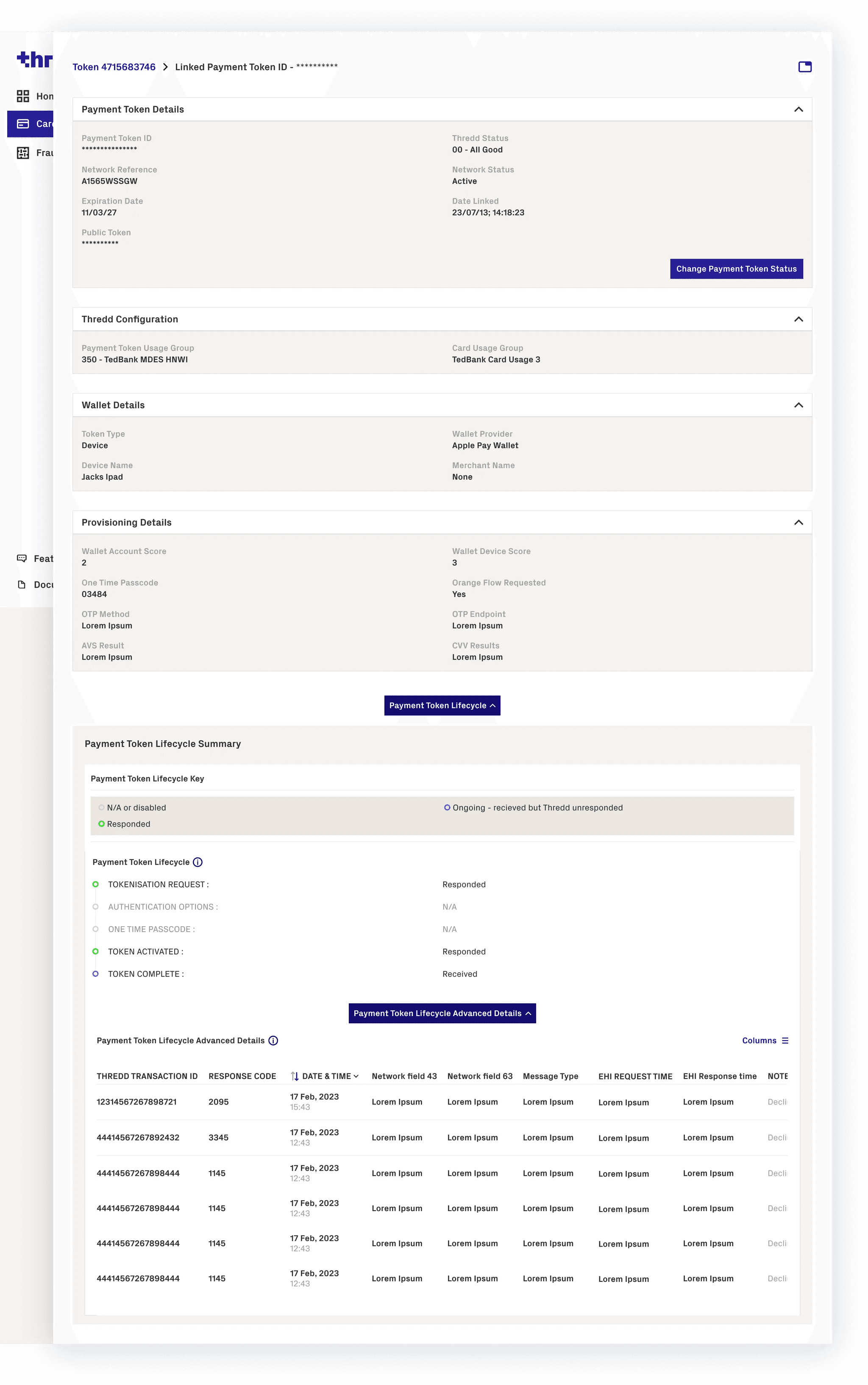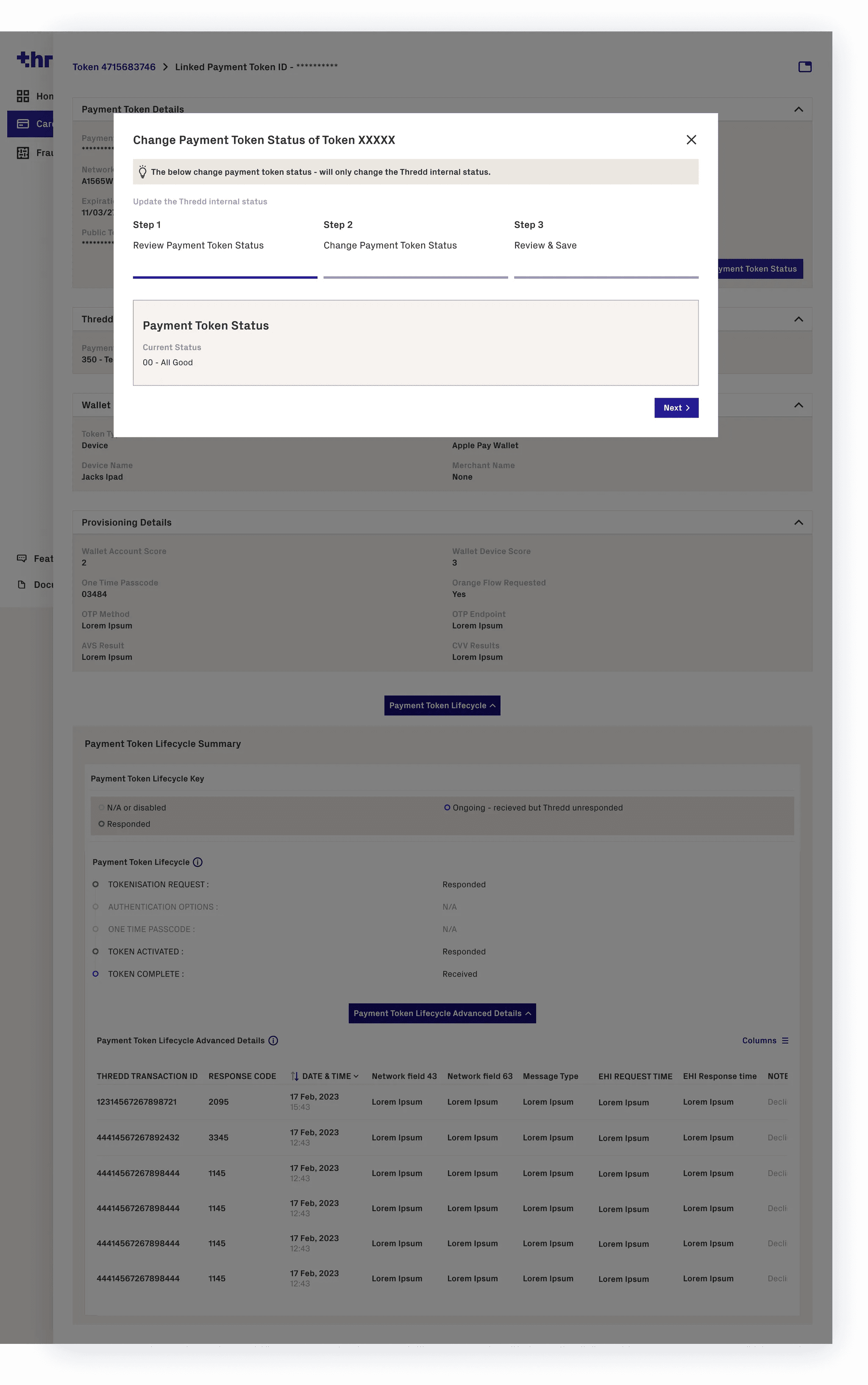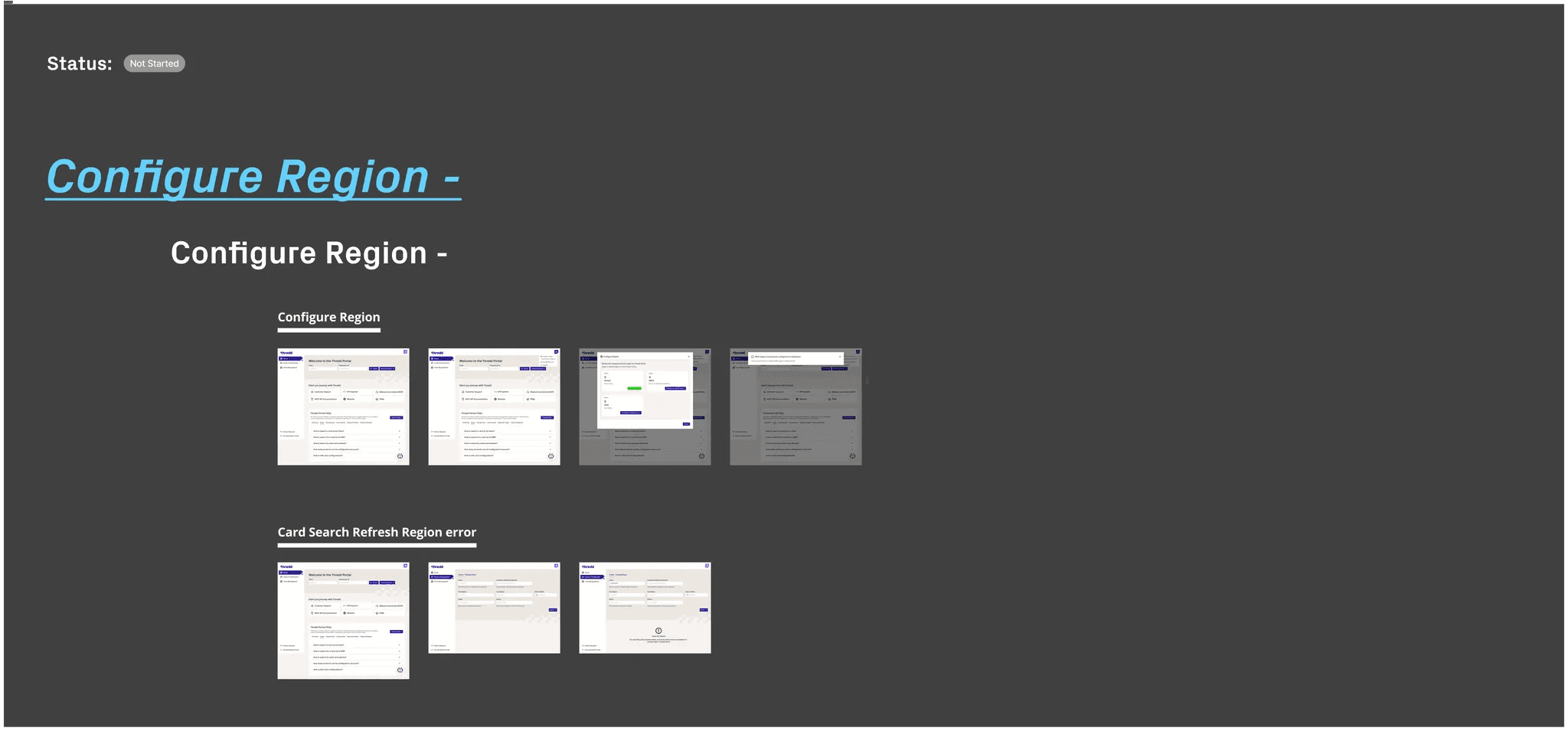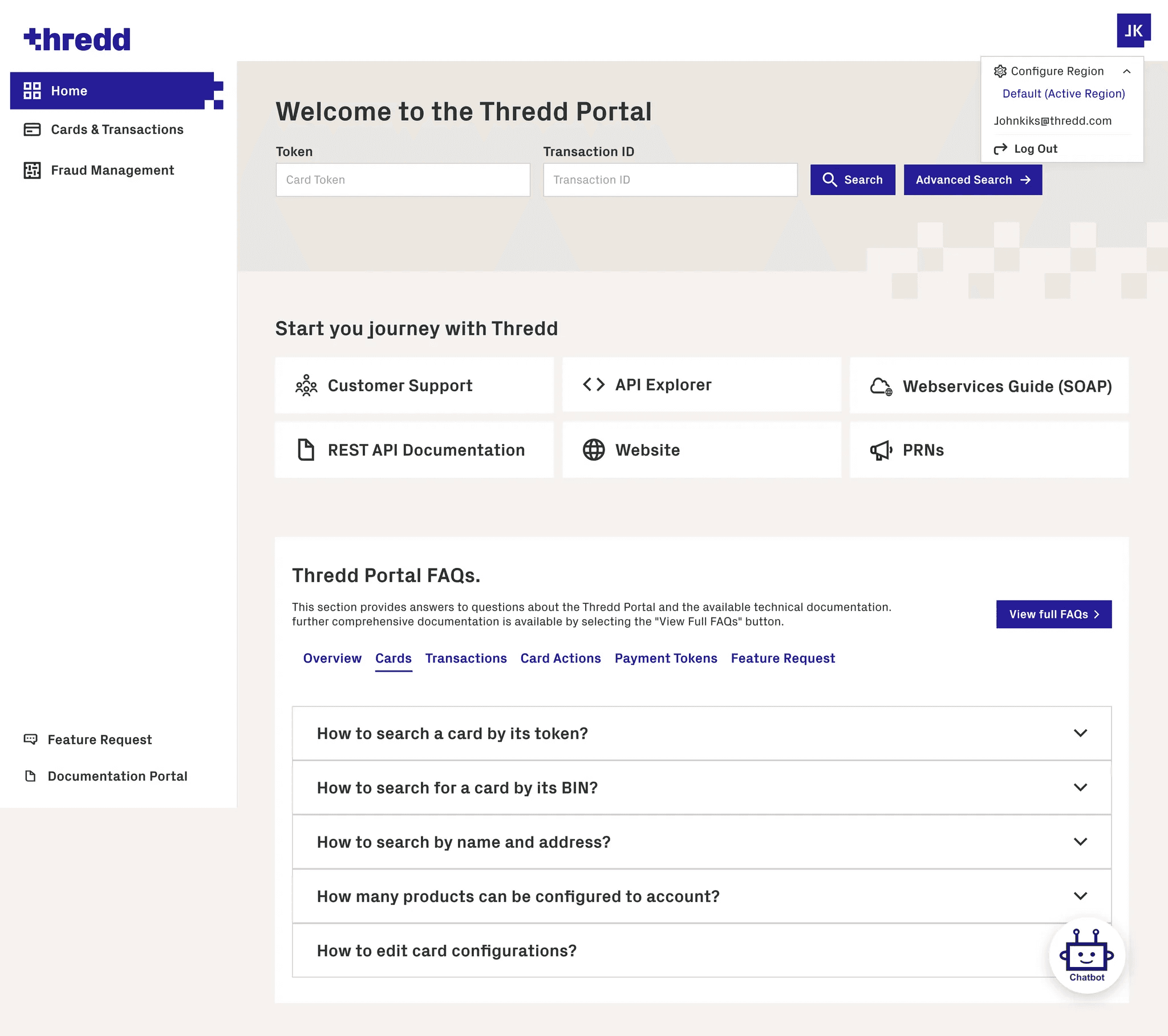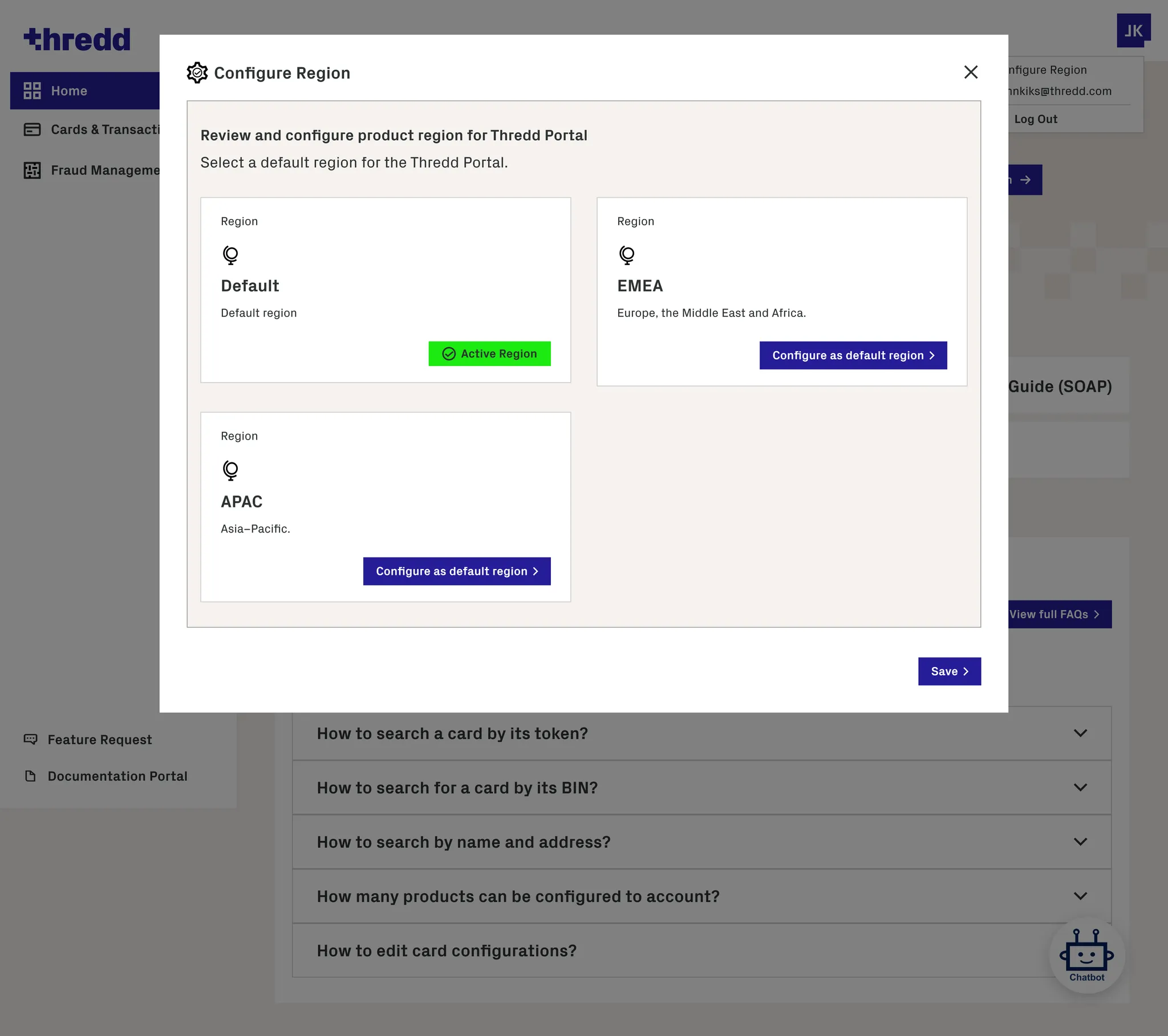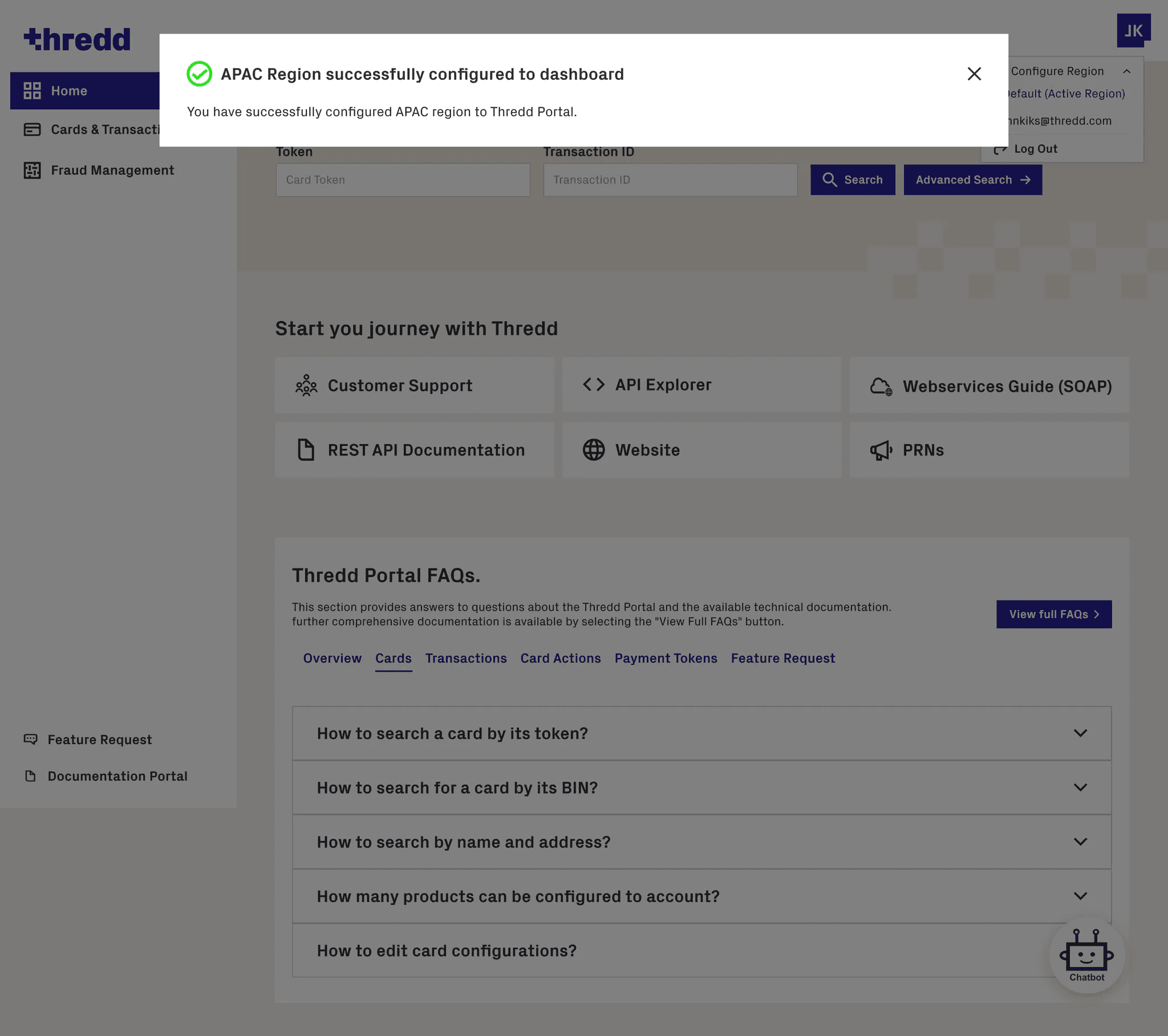Thredd Portal
Financial customer web portal - Fintech Industry
September 2023 - May 2024
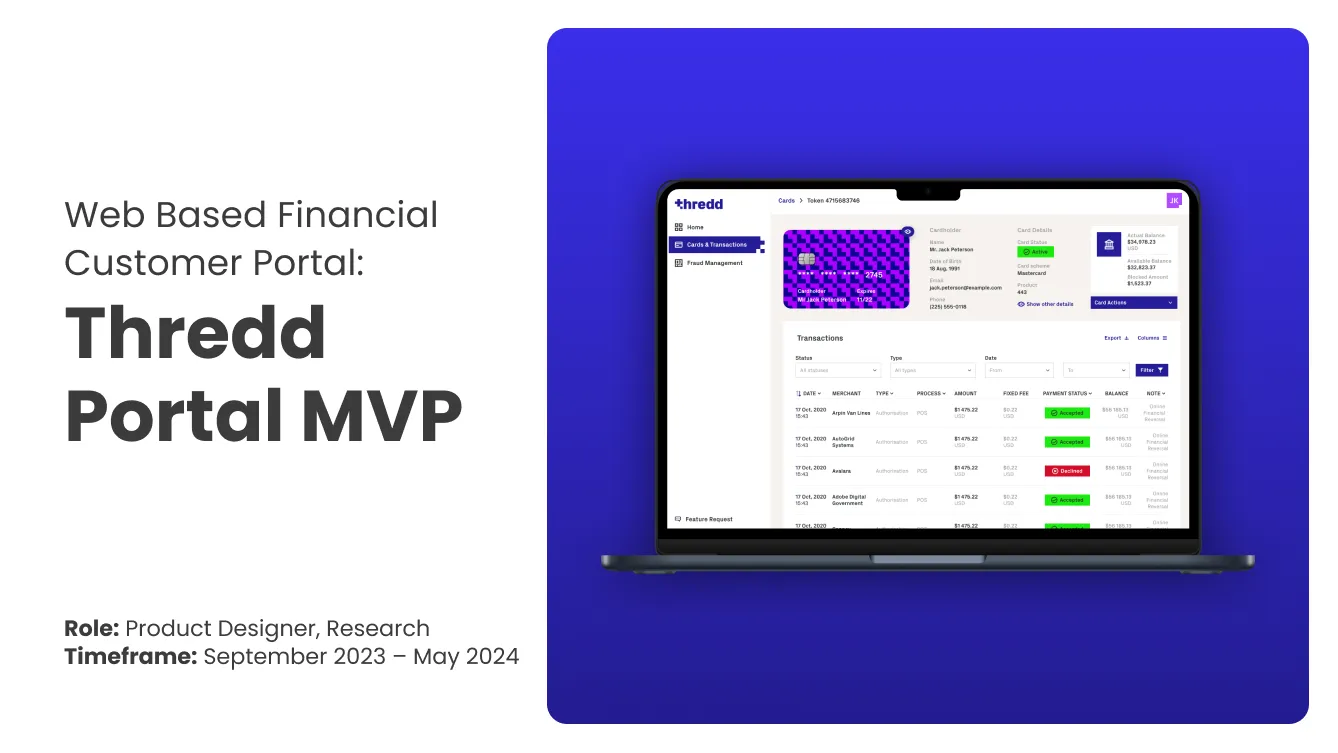
Project Details
My Role: Product Designer - Thredd
Duration: 8 months
Team: Product Designers, Developers, Product Managers
Tools Used: Figma, Miro, Jira, Confluence, Adobe Suite, Notion, Hotjar and Google Analytics
The Problem
The Thredd Portal project aimed to modernize and rebrand the legacy Smart Client financial tool, addressing usability issues and outdated design. Originally a Windows-only application with a complex user experience and long onboarding times, Smart Client received negative feedback from users, particularly Mac-based businesses unable to access it. To enhance usability, accessibility, and brand consistency, Thredd developed a web-based platform that retained key features while delivering a seamless, redesigned user experience aligned with the company’s new branding.
Hypothesis
Offering the Thredd Portal product as a web based customer portal that clients (business in financial market) can access on any machine - windows and mac whilst keeping all the key features of the Smart Client product and undertake a full user centric redesign with the latest Thredd branding clients will remove user pain points and provide a lean and efficient product offering that would be successful as a tool in the financial market.
Business Goals
Undertake extensive user research to ensure a user centric product is released to overcome shortcomings of lack of user research in Smart Client application
Ensure two step security on login to adhere to industry standards for financial tool
Rebrand tool to be consistent with new Thredd branding
Build product in modern user interface for desktop only, ensure universal web patterns are used
Undertake user testing and QA before MVP release
Improve performance and reliability of product offering, Smart client offered slow loading and result speeds

Research
Discovery Workshop Research
At the start of the Thredd Portal project I organised a discovery research workshop with key internal stakeholders at Thredd including members from operations, sales, marketing, project managers, business analysis, subject matter experts and engineers.
The aim of the workshop was to better understand the main problems of the existing legacy Smart Client product and which features are essential/possible to be included in Thredd Portal MVP release and how the features help us reach the different business goals.
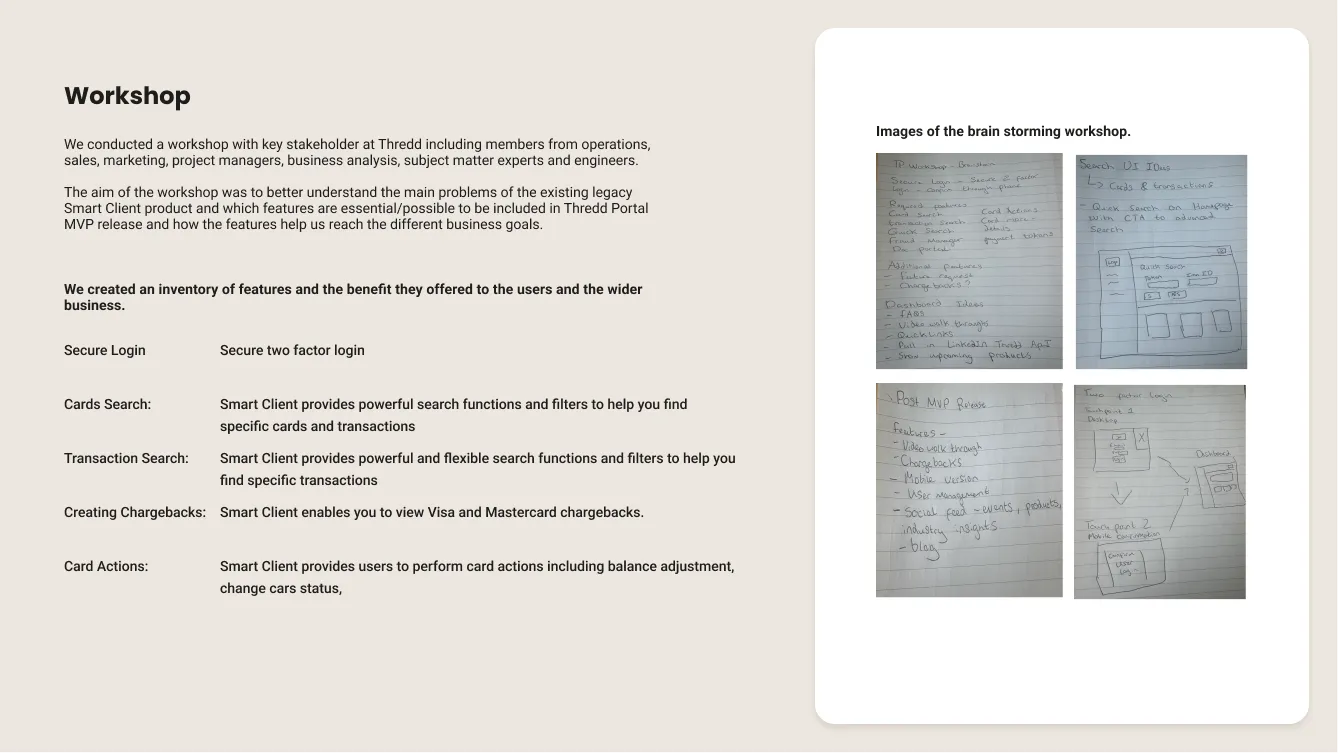
Future scoping process
Due to Smart Client’s complex backend, replicating all features for the web-based Thredd Portal posed challenges, requiring some functions to be descoped for the MVP. Features like Boolean transaction search, specific card actions, and card history were postponed due to extended COREAPI development time.
To refine the MVP scope, cross-functional teams—including solutions development, front-end, operations, and UX—collaborated regularly. The product design process also involved stakeholder interviews with operations and customer care teams to prioritize essential features based on actual user needs.
User Persona Development
A key UX process was identifying Thredd Portal’s primary user personas, focusing on roles, tasks, pain points, product knowledge, tools, and behaviors.
Leveraging Smart Client’s decade-long market presence, I conducted research sessions with internal teams (operations, sales, engineering) and external clients to map user personas firsthand. After multiple research rounds, we identified customer service operators and product managers as the primary users of Thredd Portal.
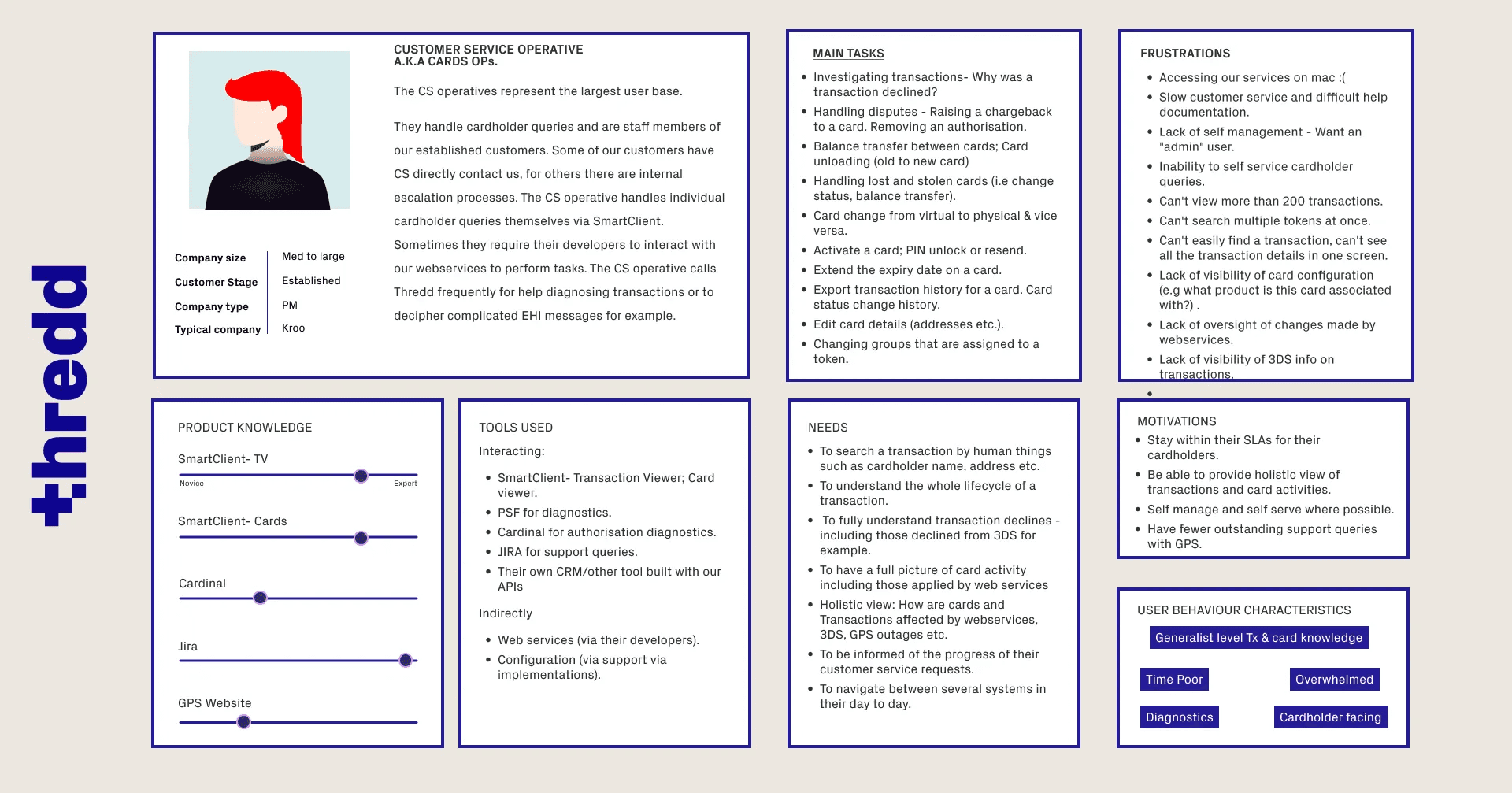
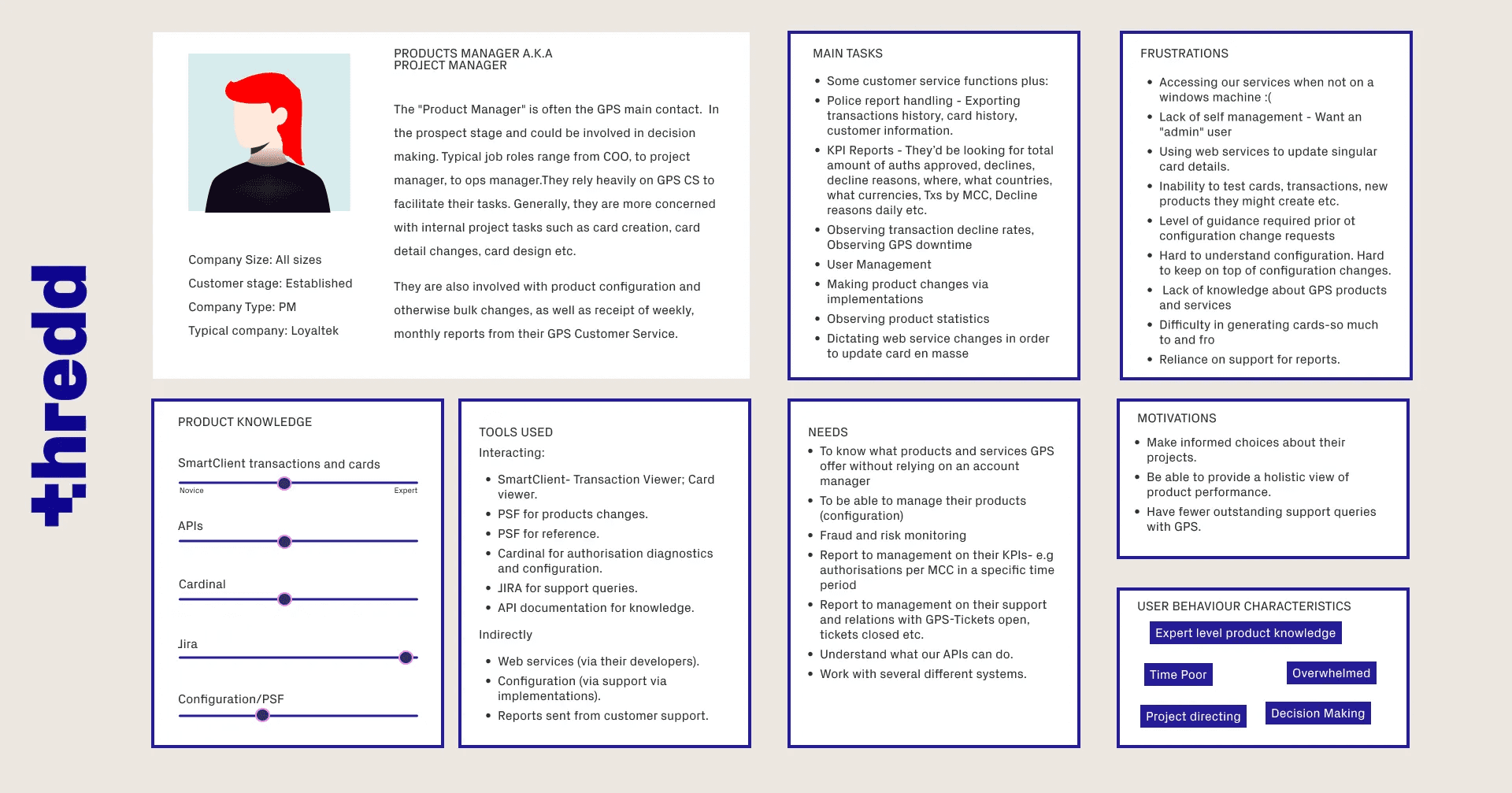
Competitor Research
The next stage of the research was to look into the competitors of Thredd and there market offerings.
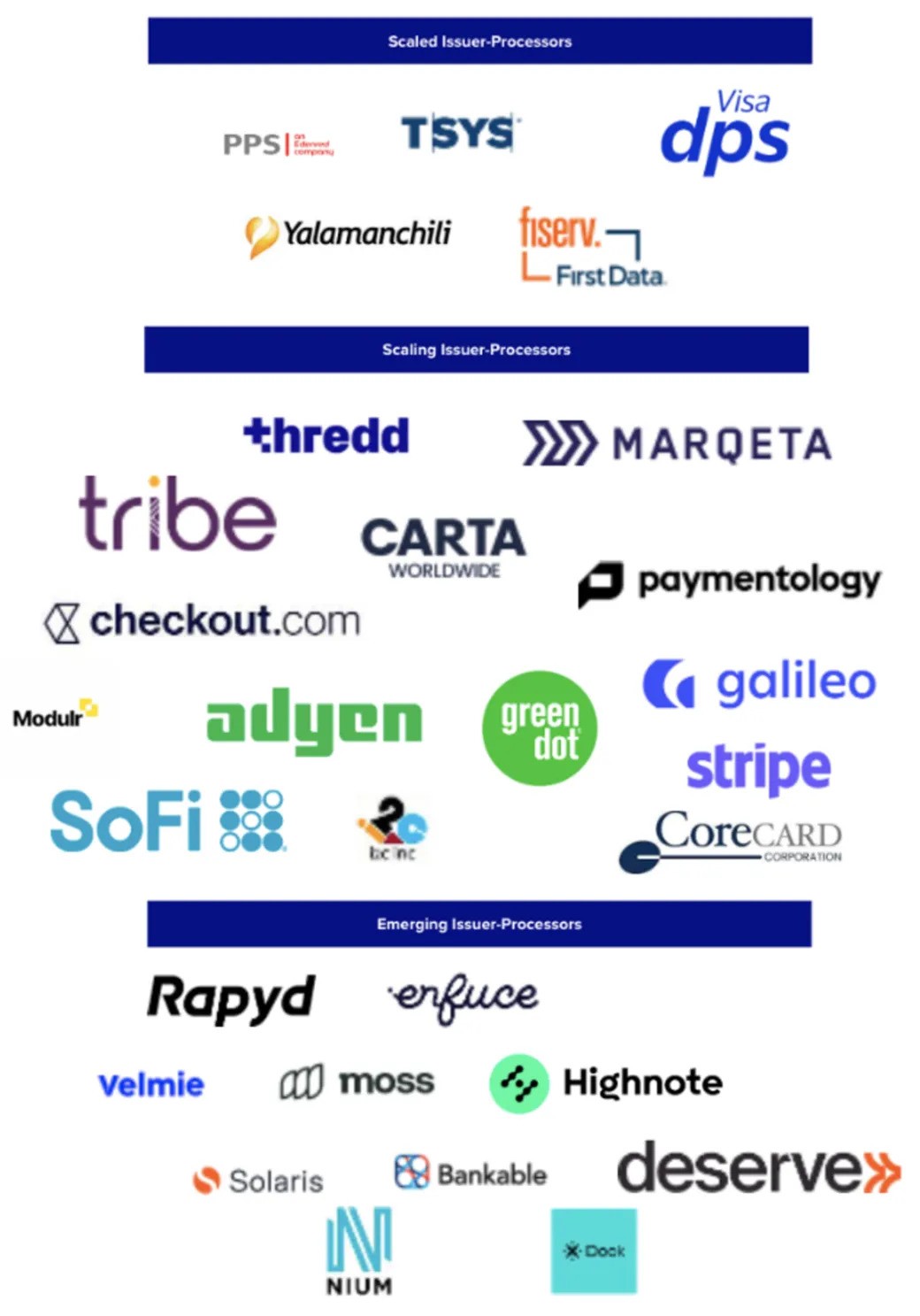
I focus primarily on Thredd main competitor in the financial payment market which is Marquetta. After doing in-depth research into Marqeta product offering we discovered a similar product offering of a customer portal, I undertook a competitor analysis of the product to understand its offering and features to identify ways in which the Thredd portal compared and provided enhanced features.
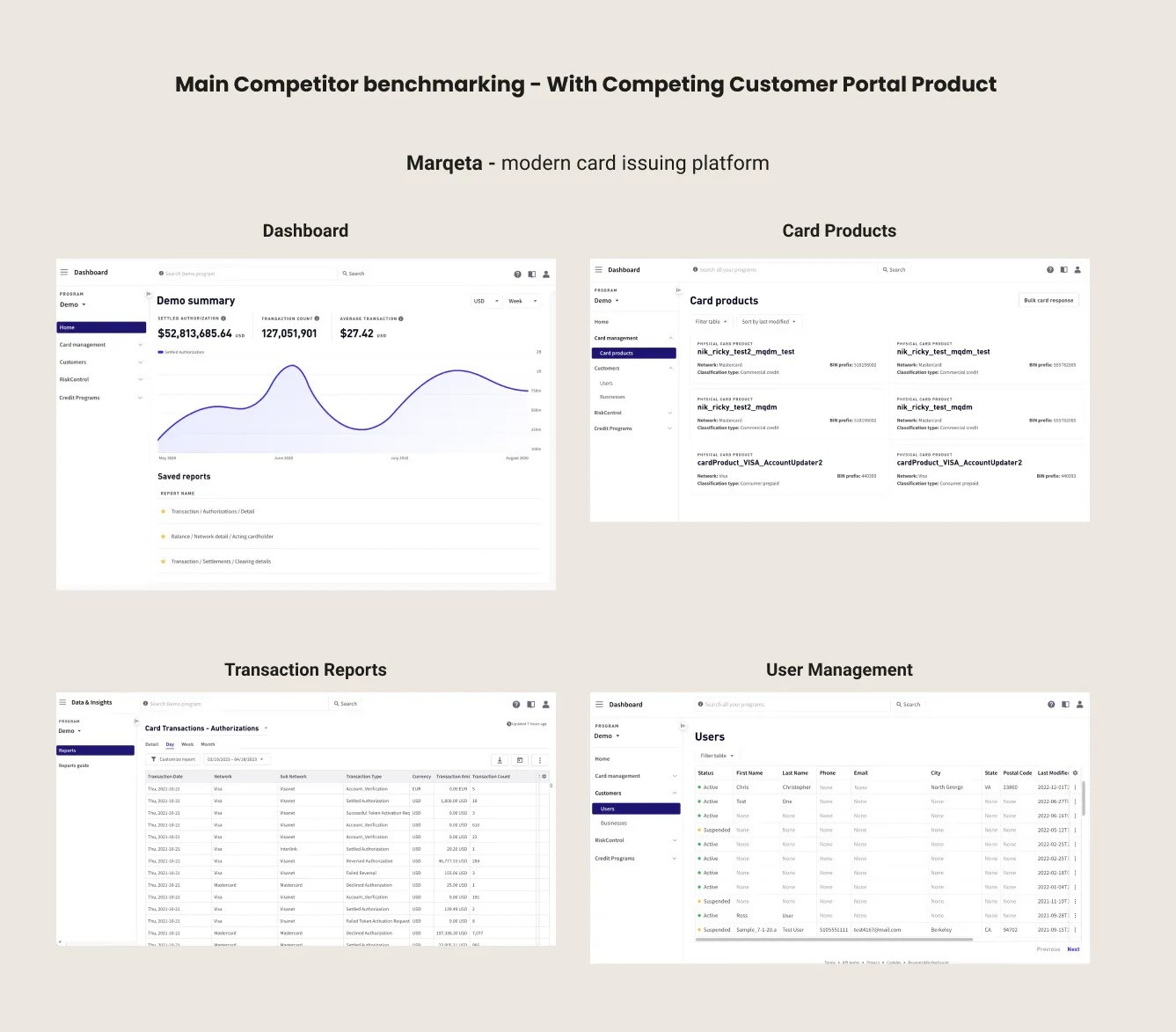
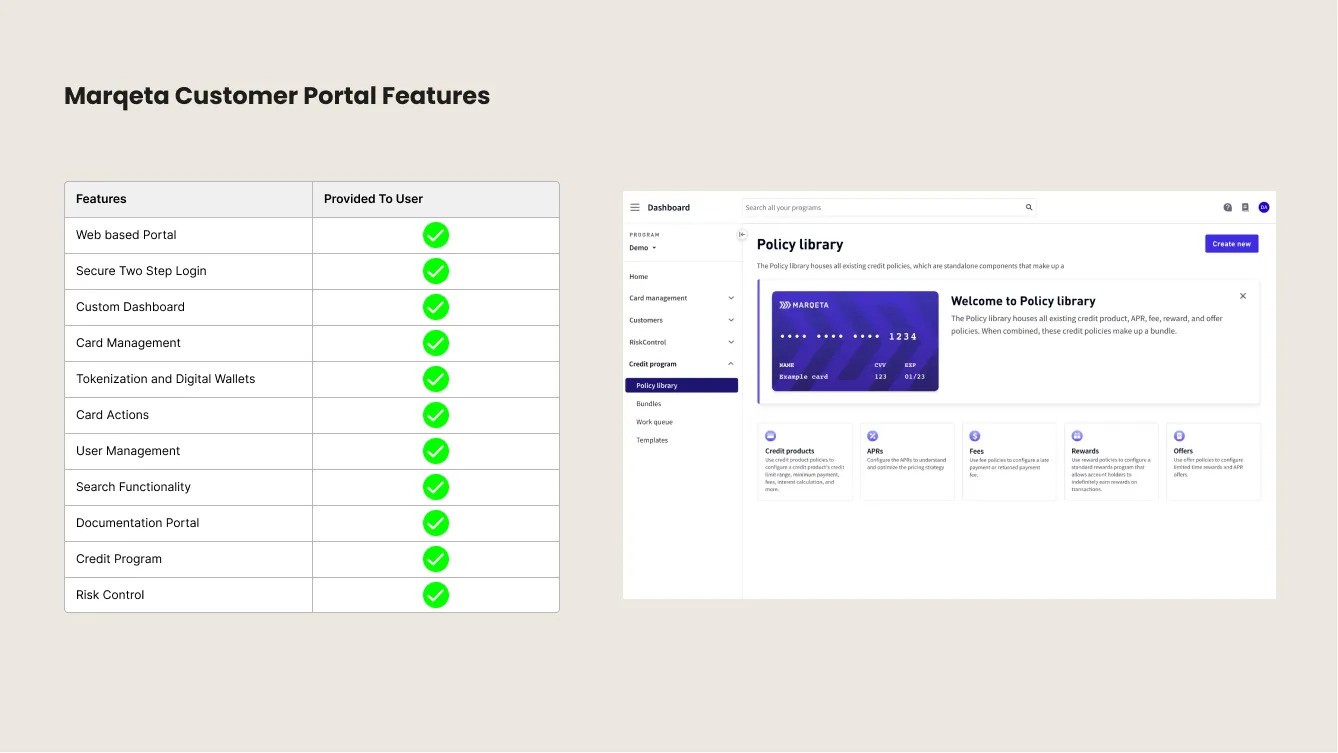
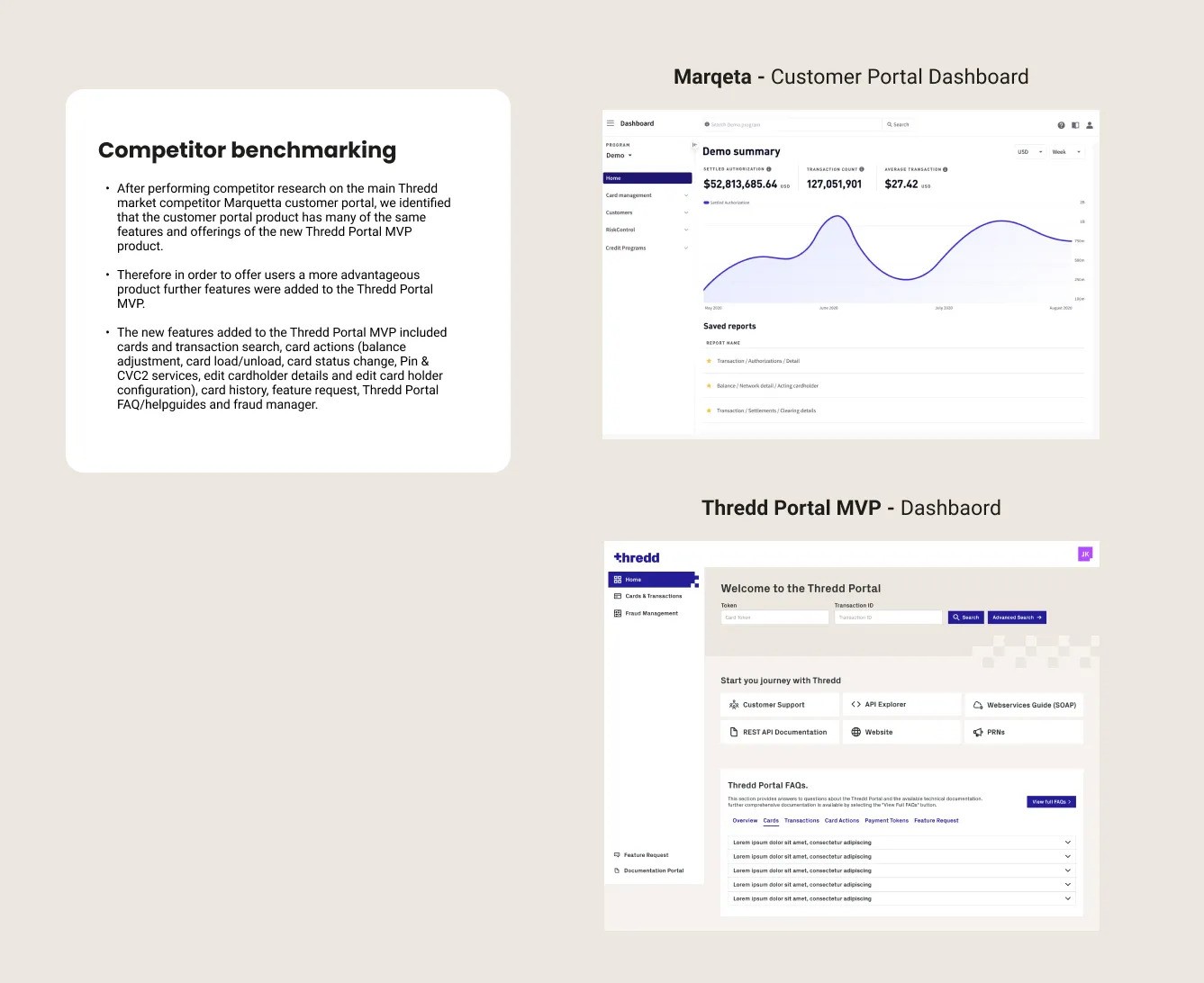
Competitor research on Marqeta’s customer portal revealed significant feature overlap with the Thredd Portal MVP. To provide a more competitive and value-driven product, additional features were integrated into the MVP.
These included card and transaction search, card actions (balance adjustment, load/unload, status change, PIN & CVC2 services, cardholder edits), card history, feature requests, FAQ/help guides, and a fraud manager, ensuring a more robust user experience.
User Flows/Journeys
Once we the product team had decided upon the key features that needed to be added into the Thredd Portal MVP, I took on further user journey mapping, I undertook this for all features to create the most efficient journey for the user to complete their task, mapping them out in simple user flows.
Qualitive user research - stakeholder and user interviews
To get a deeper understanding the existing project pain points and limitation I conducted 10+ external client interviews and 10+ internal stakeholder sessions (operations and sales teams), I recorded the sessions on microsoft teams and download each transcript used AI tools to Ask ChatGPT to:
✅ Summarize the transcript (e.g., “Summarize the key points from this transcript”)
✅ Identify recurring themes (e.g., “What are the main themes from this conversation?”)
✅ Highlight pain points & user feedback
✅ Extract action items & next steps
Example Prompt:
"Analyze this transcript and extract key themes, user pain points, and any recurring patterns in feedback."
This allowed me to collate and summarise key findings from interviews more efficiently and create themes from insights that can be used in the design stage. Some key finding are shown below.
We identified critical usability and perception issues with the legacy Smart Client product:
Sales Challenges: The Thredd sales team avoids demoing Smart Client due to its outdated, Windows-only interface, security concerns, and lack of modern web functionality, leading to lost sales.
Client Feedback: Users describe it as “yestertech” and outdated, with poor onboarding, difficult-to-follow documentation, and an unintuitive interface.
Accessibility Issues: Survey data and four years of NPS insights show reluctance to use Smart Client due to Windows-only compatibility and outdated security standards. Areas of the Smart Client product failed WCAG accessibility tests.
Usability & Support Load: Poor learnability results in high support ticket volume, frustrating users and increasing operational strain.
Performance & Brand Perception: Slow performance on key features such as card and transaction search and outdated branding contribute to a negative brand image among customers and prospects.
Using these insights and others , we conducted product design workshops to define solutions that eliminate pain points and create a modern, user-centric Thredd Portal.
Technical discussion with engineering
Its essential to involve the engineers in the early stages of the product process to get clarity on the tech stack the team is using, programming languages, frameworks, databases and tools.
Understand and be made aware of any technical challenges and aspects of the project, I conduced multiple sessions with Head of engineering and front end developers assigned to the project to gain clarity and understand the technical needs and feasibility of the project, in order for me to design around.
Setting success metrics
I worked with the product manager and product lead to set key OKR and metrics to track the success of the project, some of the metrics included improved reduced load times for critical features like cards and transaction search, shorter product training and on boarding times, simplified experience to reduce help tickets to support team and access to documentation to help independent use of platform.
Design Evolution: From Sketches to High-Fidelity Prototypes
Following the confirmation of the product roadmap and feature set, I began iterating on the designs, starting with hand-drawn sketches before transitioning to low-fidelity wireframes in Figma. I conducted daily and weekly workshops with key stakeholders—including Product Managers, Business Analysts, Operations Managers, Technical Specialists, Customer Care Specialists, and Engineers—to refine designs and ensure feasibility. Once wireframes were approved, I progressed to high-fidelity prototypes in Figma for final validation.
Following the confirmation of the product roadmap and feature set, I began iterating on the designs, starting with hand-drawn sketches before transitioning to low-fidelity wireframes in Figma. I conducted daily and weekly workshops with key stakeholders—including Product Managers, Business Analysts, Operations Managers, Technical Specialists, Customer Care Specialists, and Engineers—to refine designs and ensure feasibility. Once wireframes were approved, I progressed to high-fidelity prototypes in Figma for final validation.
Sketches
Initial Sketches for the Thredd Portal Login, Dashboard and Card Token Search Result Screen, once I had sketches out initial designs I moved to designing low fidelity wireframes format in Figma.
Dashboard wireframes -
Card Token Result Wireframe -
Card Token More Details -
Transaction More Details -
Tokenised Wallets -
Help Centre -
Notifications -
Usability testing
I undertook usability testing for the wireframes prototypes with internal stakeholders and some specific clients giving them specific tasks or features to complete and tracked there use of the product asking them to speak outload about any areas of confusion or areas they liked and recorded the sessions, analysed the transcripts and iterated on the designs to make the design more user centred.
Once this was repeated multiple times and included engineers to ensure all designs were technically feasible and within development resource, I moved on to a more high fidelity designs including the new Thredd branding.
Final Prototype Designs
Use the below links to view finalised prototype designs for Thredd Portal product.
Transaction Search Result More Details →
Login Screens -
I designed the Thredd Portal Login screens in Figma in the Thredd Branding and added the components to the product design system. I designed multiple login flows for different login journeys such as successful, incorrect/email, incorrect password, forgotten password reset.
Dashboard -
The Thredd Portal dashboard went through multiple rounds of designs with key stakeholder feedback and had to be redesigned due to some elements having tech constraints the finalised dashboard is below:
Card Search -
One of the most used features in Smart Client is the card search feature which allows users to search for client cards using search parameters such as card token, customer reference number, first name, last name, DOB, email and phone. We recreated this feature with an improved user experience and updated Thredd branding, search journeys and search landing page shown below:
View Live Card Spends -
A key feature of smart client that was scoped to be in Thredd Portal is view live card spends which presents users with the card holder live spend limits that have been set on that specific card.
Transaction search -
The transaction search is one of the primary user tasks when using Smart Client and the Thredd portal, the feature allows users to search for a transaction and see all key details to diagnose a transaction.
Transaction Search Result -
The transaction search is one of the primary user tasks when using Smart Client and the Thredd portal, the feature allows users to search for a transaction and see all key details to diagnose a transaction.
Transaction Search Result More Details -
Card Action -
A key feature of Smart Client and Thredd Portal is card actions, the user can search a card and perform the following card actions - balance adjustments, card load/unload, change card status, pin & CVC2 services, edit card holder details and edit card configurations. I designed prototypes for each card actions, using a progress modal component for user to complete each stage of the card action.
Payment Tokens -
The payment token feature was another main feature of Smart Client and Thredd Portal and allows users to see all of the payment tokens attached to a specific card and then diagnose the token and perform an action.
Region configuration -
The region configuration feature was added just before launch as the engineering team realised that due to the global data in the database when a user performed a search the results took too long to return due to having to search through a massive amount of data. Therefore a configure region feature was added so that users could select a specific region which would narrow down their search requirements and receive instant search results.
Testing
Weekly usability testing was conducted with internal Thredd staff and over 10 client users, including Customer Service Operators and Product Managers from Curve.
Initially, low-fidelity wireframes were reviewed with operations, sales, engineering, BAs, PMs, and subject matter experts to address technical constraints and gather insights from long-time Smart Client users.
As designs progressed to high fidelity, weekly usability sessions with internal and external users helped refine the experience, ensuring pain points were eliminated before the MVP release. User feedback was incorporated into iterative design updates.
Post-Release Analysis & User Feedback
In the 30 days post-release, we leveraged Hotjar (heatmaps), Google Analytics, and user surveys to track engagement and usability. Results showed a 50% reduction in time spent on key features like card and transaction search, improving efficiency. Heatmapping tools showed positive interaction with features with low bounce times on not completing feature lifecycle.
User surveys and feedback sessions with internal staff and external clients confirmed the Thredd Portal MVP as a significant upgrade from Smart Client, with 100% of users agreeing it was an improvement. Onboarding time was reduced by 80%, and the addition of FAQ and documentation was well received.
The sales team reported strong performance, meeting quota and noting that the modern UI and branding made demos effortless, boosting engagement at events.
The feature request tool proved valuable, highlighting user demand for features like chargebacks, enabling collaboration with support teams to refine post-MVP updates.
Learnings & Future Roadmaps
Plan strategically for MVP launches to manage scope and ensure timely, high-quality delivery.
User testing is ongoing—continuous feedback drives experience improvements.
Early engineering involvement minimizes rework by aligning design with technical constraints.
Since its 2024 release, Thredd Portal has successfully onboarded new customers with positive feedback on usability and reduced training time. Moving forward, user insights highlight the need for new feature expansions in the post-MVP roadmap.
